energy transition
description: long-term structural change towards sustainable energy systems
106 results

The Price Is Wrong: Why Capitalism Won't Save the Planet
by
Brett Christophers
Published 12 Mar 2024
In what manner, then, and to what extent, did price evidently influence the major energy transitions of the past? Roger Fouquet, a leading researcher in this field, has summed up the main conclusions of the literature in the following useful terms.24 Essentially, Fouquet says, historians have found that for a ‘full’ energy transition from one energy form to another to take place, the price of the winning technology must be lower. This, he notes, is not to say that other factors play no part. Of course, they do – but only ever contingently. In other words, propitious political, cultural, geographical or other such factors can make such a full energy transition more or less likely and will fashion the substance of that transition in myriad ways, but only one factor – a lower price – is necessary for the transition to occur.
…
Lin, ‘China’s Energy Transition Hits a Bump in the Road amid Slow Power Market Reforms’, 7 October 2021, cleanenergynews.ihsmarkit.com. 21 China Electricity Council, ‘Analysis and Forecast Report on the National Power Supply and Demand Situation in the Third Quarter of 2022’, 25 October 2022, cec.org.cn. 22 Lin, ‘China’s Energy Transition’. 23 China Electricity Council, ‘Analysis and Forecast Report’. 24 Davidson, ‘China’s Power Outage’. 25 N. Bullard, ‘Why Australia’s Power-Grid Debacle Matters for Global Energy’, 23 June 2022, bloomberg.com. 26 Cited in Lin, ‘China’s Energy Transition’. 27 IEA, ‘Electricity Market Report: January 2022’, iea.org, p. 25. 28 G.
…
‘The “wall of capital” that was supposedly coming to finance the global energy transition’, Marsh succinctly put it, ‘has proven to be more of a dam.’31 VI Does any of this matter? And if so, how, and why? Before ending this introduction and beginning the book proper, it is worth briefly addressing this question. What might the reader hope to take away from the book in terms of key implications? What are the stakes? The book’s findings and arguments are relevant principally for two sets of significant issues. First, they clearly bear on understandings of and claims about the economics and drivers of the energy transition. An enormous amount has been, is being and will continue to be said and written about the main forces shaping the nature, speed and scope of humanity’s stuttering response to the climate crisis.
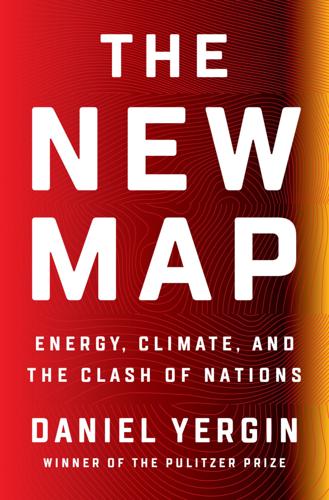
The New Map: Energy, Climate, and the Clash of Nations
by
Daniel Yergin
Published 14 Sep 2020
There is certainly no consensus as to the speed of the transition, nor as to what the transition will look like decades from now, nor as to the cost—nor as to how it is all to be achieved. Energy transitions are not new. They have been going on for a long time and unfold over time. Previous energy transitions have primarily been driven by technology, economics, environmental considerations, and convenience and ease. The current one has politics, policy, and activism more mixed in. The first energy transition began in Britain in the thirteenth century with the shift from wood to coal. Rising populations and destruction of forests made wood scarce and expensive, and coal came to be used for heating in London, despite fumes and smell.
…
See also shareholder activism Doha, Qatar, 278–79 Donbas region, 79 Donilon, Thomas, 59 Dow, 29–30 drone technology, 251–52, 286 Drucker, Peter, 162 Dutch East Indies, 140 Dyukov, Alexander, 76 Eagle Ford Shale, 17, 24, 24, 42, 55 Earth Justice, 51 earthquakes, 28 East Asia, 33 East China Sea, 148 Eastern Europe, 88, 109 Eastern Mediterranean energy reserves, 253–58 East Turkistan Islamic Movement, 180 Eberstadt, Nicholas, 132 Ebola epidemic, 315 “economic miracle” countries, 33, 74–75 Economic Survey (India), 408 Economist, The, 276, 286, 307–8 Edison, Thomas, 329 Egypt and Arab nationalism, 203–5, 214 and Arab Spring protests, 237–38 and Eastern Mediterranean petroleum resources, 254, 256–57 and historical context of Middle East conflicts, 196 and Iranian Revolution, 209 and Islamic fundamentalism, 259–63, 264, 270 and Qatar, 306 and Syrian civil war, 251 Einstein, Albert, 394–95 election interference, 70, 78, 81, 103–4 electric power and infrastructure, xix, 12–13, 184, 186, 234, 345–46, 404 electric vehicles (EVs), xviii, 327–46, 368–71, 415, 427, 428, 430 embassy bombings in Kenya and Tanzania (1998), 264–65 emissions standards, 335–37, 339, 346 Energiewende (“energy turn”), 86–87, 395–96 energy security and independence and Canadian imports to U.S., 47 and China’s development of petroleum resources, 160 and current geopolitical challenges, 427 and Eastern Mediterranean petroleum resources, 254–57 and electric vehicles, 341 and energy transition in the developing world, 408–9 and energy transition in U.S., xv and gas supplies to Europe, 84–89 and Nixon administration, 53 and opposition to Russian gas exports, 109 and politics of U.S. shale production, 55 and Russia-Europe relations, 83 and South China Sea tensions, 171 and varied approaches to climate change, 412–13 “energy superpower” status, xv, 57, 70–71 Energy Transfer Partners, 49, 51 energy transition and breakthrough energy technologies, 403–6 and carbon capture technology, 419 and current global challenges, xiii–xx, 427–29 and developing world, 407–10 emerging consensus on climate issues, 382–87 and “green deal” proposals, 388–91, 391–93 historical perspective on, 377–79 and IPCC, 379–80 and Paris climate agreement, 380–82 and push for renewable energy sources, 394, 400–401 and U.S. position, xv and varied approaches to climate change, 412 Eni, 256 environmental issues and activism and American shale gas reserves, 113 and Fukushima nuclear disaster, 87 and global power politics, xiii and hydraulic fracturing, 28–29 and indoor air pollution in developing countries, 407–8 and opposition to pipeline projects, 46–51 and U.S. transition to LNG exporter, 37 See also carbon emissions; climate change Environmental Defense Fund, 28–29 EOG, 14–17 Erbil, Kurdistan, 232 Erdoğan, Recep Tayyip, 247, 305, 315 ESPO pipeline, 118 Estonia, 69 EU Council, 102 Eurasian Economic Union, 92, 93, 189 Europe and China Belt and Road Initiative, 182, 184 and Eastern Mediterranean petroleum resources, 258 and impact of U.S. shale and LNG, 38, 55, 61–62 and push for renewable energy sources, 398–99 See also European Union (EU); specific countries European Central Bank, 187 European Commission, 388–90 European Union (EU) and energy security issues in Europe, 85–88 and energy transition challenges, 381 and “green deal” proposals, 388–91 and Nord Stream 2 pipeline, 102, 104, 108–9 and Russian annexation of Crimea, 95 and Russian gas supplies to Europe, 85 and Russian geopolitical ambitions, 70, 115 and Russia-Ukraine tensions, 93 and Syrian refugees, 248 Exclusive Economic Zones (EEZs) and territorial waters, 142–45, 148, 159, 170, 257 extraterritoriality, 108, 139 ExxonMobil, 15, 65, 76, 395 Fabius, Laurent, 381 Fahd bin Abdulaziz Al Saud, 214 Faisal I, King of Iraq, 198–200, 202–3 Falcon rockets, 332 Farouk I, King of Egypt, 203 Federal Bureau of Investigation (FBI), 103 financial crisis of 2008, 26–27, 333, 429 Financial Stability Board, 385 Financial Times, 113, 273 financing for energy projects and China Belt and Road Initiative, 182–83 and “green recovery” proposals, 428 and push for renewable energy sources, 397, 400–401 and Russian interests in Central Asia, 125–26 and Russian LNG, 112 Fink, Larry, 385 First Opium War, 139 First Sino-Japanese War, 154 5G technology, 175, 354 “flight shaming,” 387, 415 Ford, Bill (and Ford Motor Company), 329, 338, 346, 351, 369–70, 373 Ford, Henry, 372–73 Fort Laramie Treaty, 49 Fracking Debate, The (Raimi), 28 France, 138, 195–96, 201–2, 227, 232, 247, 343 Freeport LNG facility, 24, 35–37, 38 Free Syrian Army (FSA), 244 Fukushima nuclear accident, 63, 87, 401, 430 G7, 129 G8, 129 G20, 129, 280, 319–20, 388, 426 Gadhafi, Muammar, 239 Gadkari, Nitin, 342 Gaidar, Yegor, 73 gasoline and Auto-Tech advances, 368, 370–72 and “clean diesel,” 335 and consumer behaviors, 421 Mexican imports, 41, 43 and oil embargo of 1973, 53–54 and oil price war, 316–17, 323 and pipeline battles in U.S., 47 Gates, Bill, 315, 385–86 Gates, Robert, 237–38 Gaza, 253 Gazprom, 76, 80, 86, 89, 105, 107–8, 109, 125 Geely, 338 General Motors, 171, 329, 333–34, 369 Georges-Picot, François, 194–95, 196–98, 201–2 Georgia (country), 82 Germany and “clean diesel,” 336 economic growth before World War I, 132 and energy security issues in Europe, 86–88 and energy transition challenges, xix and global order after First World War, 200 and Iranian nuclear ambitions, 223, 227 and Khashoggi affair, 305–6 and Nord Stream 2 pipeline, 102, 104–5, 107–8 and push for renewable energy sources, 395–96, 400–401 and Russia’s “pivot to the east,” 117 and Syrian refugees, 248 and the Thucydides Trap, 131, 154 and U.S.
…
The Rise of the “Eastern Med” 33. “The Answer” 34. Oil Shock 35. Run for the Future 36. The Plague ROADMAP 37. The Electric Charge 38. Enter the Robot 39. Hailing the Future 40. Auto-Tech CLIMATE MAP 41. Energy Transition 42. Green Deals 43. The Renewable Landscape 44. Breakthrough Technologies 45. What Does “Energy Transition” Mean in the Developing World? 46. The Changing Mix Conclusion: The Disrupted Future Photographs Acknowledgments Notes Illustration Credits Index Introduction This book is about the new global map that is being shaped by dramatic shifts in geopolitics and energy.

The War Below: Lithium, Copper, and the Global Battle to Power Our Lives
by
Ernest Scheyder
Published 30 Jan 2024
By imposing such a rigorous and destructive style of cultivation that eschewed traditional farming techniques and disrespected natural processes, Ghosh argues, the seeds of the climate crisis were planted.65 Extrapolating Ghosh’s core argument for the green energy transition requires grappling with where, how, and why each nation procures its own green energy building blocks, and that there likely will not be an equitable green energy transition unless the globe reckons with how the climate crisis began. “We throw around these words ‘energy transition’ and ‘the future of energy’ and ‘climate action,’ but basically what we’re doing right now—this generation—is having a massive overhaul of the entire global energy system while at the same time we are electrifying everything,” said Amos Hochstein, an energy advisor to Obama and Biden.
…
“He knows everything there is to know about lithium and starting a lithium company.” I was transitioning from my coverage of the U.S. oil industry’s fracking revolution to coverage of the miners jockeying to supply lithium and other metals for the green energy transition. It was an opportunity I looked forward to, even if it was daunting. I had already reported on one major energy transition; here was a chance to cover a second one. Opportunities like that don’t come along too often. But while the politics and production of fossil fuels are well understood and similar, making a battery would require multiple metals, some made and sourced in wildly different manners.
…
Importantly, the name also fixated on a metal—gold—that was not essential for the green energy transition. Evoking Idaho’s state motto, Midas became Perpetua Resources in February of that year, moved its headquarters to Boise, and listed its stock on the Nasdaq exchange in New York. The new company pledged to focus itself on developing “the critical resources our country needs for a more secure and sustainable future.”20 It was a shrewd strategy; the company was effectively cloaking its gold plans behind the green energy veneer of antimony, a tactical response to the Biden administration’s focus on the green energy transition. “We have been planning on antimony being a part of this project forever.
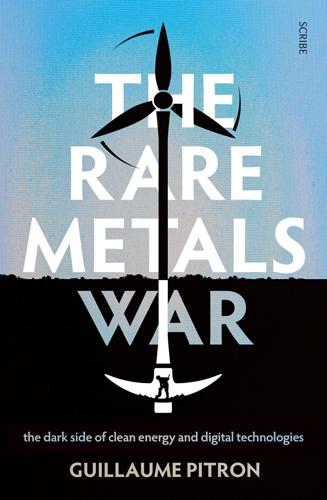
The Rare Metals War
by
Guillaume Pitron
Published 15 Feb 2020
Then, from the eighteenth century, humans used the steam engine to power their looms, propel locomotives, and float battleships to reign over the seas. Steam powered the first industrial revolution. This was the world’s first energy transition, and one underpinned by the use of an indispensable fuel: a black stone called coal. In the twentieth century, humans cast aside steam for another innovation: the petrol engine. This technology made vehicles, boats, and tanks more powerful, and paved the way for a new machine — the aeroplane — to conquer the skies. This second industrial revolution was also an energy transition, this time relying on the extraction of another resource: a rock oil called petroleum. The disruptive effects of fossil fuels on the climate since the turn of the current century have driven humanity to develop new and supposedly cleaner and more efficient inventions — wind turbines, solar panels, electric batteries — that can connect to high-voltage ultra-performance grids.
…
In the twenty-first century, one state is in the process of dominating the export and consumption of rare metals. That state is China. Consider this economic and industrial observation: by committing to the energy transition, we have flung ourselves headlong into the jaws of the Chinese dragon. Arguably, the Middle Kingdom holds a near monopoly over a profusion of rare metals without which low-carbon and digital energies — the very foundations of the energy transition — cannot exist. And, as I will address later in this book, China has used barely credible chicanery to position itself as the sole supplier of the most strategic of the rare metals.
…
For further reading, also refer to Olivier Vidal’s book Mineral Resources and Energy: future stakes in energy transition, ISTE Press Ltd, 2018. Olivier Vidal, Bruno Goffé, and Nicholas Arndt, ‘Metals for a Low-Carbon Society’, Nature Geoscience, vol. 6, November 2013. Ibid. ‘The Growing Role of Minerals and Metals for a Low Carbon Future’, The World Bank Group, June 2017. See also ‘Métaux: les besoins colossaux de la transition énergétique’ [‘Metals: the colossal needs of the energy transition’], Les Échos, 20 July 2017. ‘How Many People Have Ever Lived on Earth?’, Population Reference Bureau, 2011.

Investing to Save the Planet: How Your Money Can Make a Difference
by
Alice Ross
Published 19 Nov 2020
In the energy sector, which we’ll look at in more detail in Chapter 5, we’ll see that oil and gas companies need to transition to alternative energy sources. If shareholders like those involved with the Climate Action 100+ initiative put pressure on them, that could help to speed up the energy transition. Some people argue that it could even be damaging, at this early stage of the energy transition, to dump fossil fuel stocks altogether. A January 2020 report by Bank of America Merrill Lynch warned that as energy companies had already been a frequent target of divestments, a key risk for the energy transition was that there wouldn’t be enough capital investment in the sector in the years ahead to sufficiently support a seamless transition to a low-carbon economy.
…
The report concluded that the global energy industry was verging on its next energy transition, with wind and solar likely to be the fuel of the twenty-first century. The transition could be at a much faster pace, due to the pressure of regulation, in contrast to previous transition periods, which were more opportunistic. But historical examples have both fast and slow energy transition periods, making the pace this time around a critical uncertainty. Still, everyone recognises that if we are going to meet the Paris commitments, the world now has to undergo its third energy transition: from coal, oil and gas to renewable energy.
…
This prompted hopes that energy emissions might have peaked. The head of the IEA, Fatih Birol, told the Financial Times in February 2020: ‘The clean energy transition is starting to accelerate very strongly. This makes me hopeful we are seeing a peak in emissions and they will now start to decline.’ He was speaking before the pandemic had hit. By April, the IEA predicted that global energy-related CO2 emissions would fall by nearly 8 per cent in 2020, reaching their lowest level since 2010. ‘No oil and gas company will be unaffected by clean energy transitions, so every part of the industry needs to consider how to respond,’ the IEA said in its 2020 report.
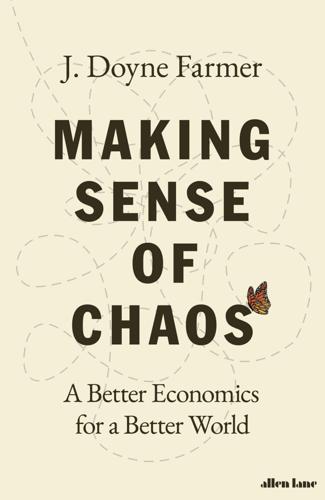
Making Sense of Chaos: A Better Economics for a Better World
by
J. Doyne Farmer
Published 24 Apr 2024
or ‘How much unemployment will this cause?’ or ‘What kind of workforce training would be most effective?’ It also suggests how the lack of skilled labor for particular industries might affect production. For example, to minimize climate change, we need to make the green-energy transition as fast as possible. Can the workforce adapt quickly enough without slowing down the green-energy transition? Penny managed an initial effort to get the lay of the land, and Maria headed the model’s development. We began by taking snapshots in time, constructing a static network in which the nodes were occupations and the links were relationships between them.
…
We are designing a new version of this model using detailed microdata from Brazil to calibrate it more precisely. To study the green-energy transition, which is happening in parallel with automation, we are also developing a model for how the production network will shift as we move from fossil fuels to renewables. We are then using the production-network model discussed earlier in tandem with the occupational-transition model to predict how the job landscape will be altered by the transition and whether bottlenecks are likely to develop that might slow the green-energy transition down. We are also incorporating geographical, as well as occupational, mobility.
…
I agree with these critiques, but I go a step further: Addressing energy-related emissions to combat climate change will very likely save us a lot of money. The technological forecasts from my research group at Oxford indicate that the green-energy transition will ultimately make energy prices substantially lower than they have ever been. From a purely economic perspective, even if climate change were not a looming threat, we should still make the energy transition quickly (doing most of it within twenty years). In addition to the huge benefits a fast transition will reap for the climate, if we discount all the costs to the present, it will probably save us tens of trillions of dollars.
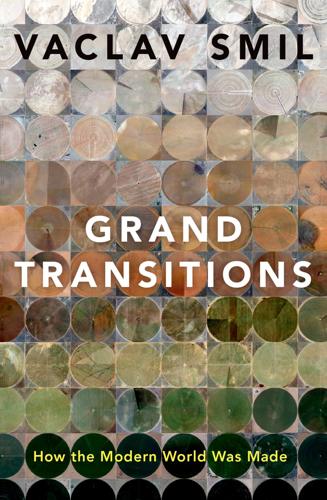
Grand Transitions: How the Modern World Was Made
by
Vaclav Smil
Published 2 Mar 2021
The cities could not have sustained high rates of growth without both agricultural and energy transitions that were able to supply food, thanks first to railways and then to new global markets for crops and meat (including refrigerated shipments since the late 1870s) and fuels and electricity, enabling unprecedented urban power densities. And the urban-led economic transition created new mass-scale opportunities in manufacturing and services that acted as the pull force for rural emigration and that provided new and affordable inputs of machines, devices, and processes needed to sustain and to expand both agricultural and energy transitions. The expanding reach of cities beyond their immediate hinterlands and their demand for food, energy, and materials had eventually extended worldwide, and urban areas became the most prominent generators of local and regional environmental pollution.
…
Economic implications of this dependence (profound changes of labor markets, impressive gains in manufacturing productivity, shifts from primary and secondary economic activities to services, increases of national economic product and of per capita incomes) will be detailed in the next chapter. In this chapter I will focus on the three principal components of energy transitions: the rapid shift from phytomass to fossil fuels and from animate to inanimate prime movers; the electrification of modern societies (an even more transformative development than the combustion of fossil fuels); and an increasing variety of energy uses. These shifts have been accompanied by impressively improving conversion efficiencies and declining energy intensities—but we still produce too much waste. Energy Transitions Once again, there is strong contrast between the stagnation and only a very slow rate of improvements during the millennia preceding industrialization and rapid changes beginning during the second half of the 19th century.
…
But the three fundamental markers of economic transition—rising growth of output, profound structural shifts, and the arrival of mass-scale consumption of products and experiences—became clearly and widely discernible only as population, dietary, and energy transitions combined with technical innovations and with better modes of governance to start a new era of unprecedented economic advances. End points or asymptotic levels indicating the completion of demographic, dietary, and energy transitions are either self-evident or can be well defined. There can be no doubt that a society has completed its demographic transition once its fertility rates have declined below the replacement level and remained there for decades; that it has gone through its dietary transition once its supply of food has greatly surpassed even the highest conceivable nutritional requirements and has generated an unacceptably high level of waste; and that it has accomplished its energy transition when it consumes no traditional phytomass fuels and relies solely on a mixture of fossil fuels and primary electricity consumed at high per capita rates.
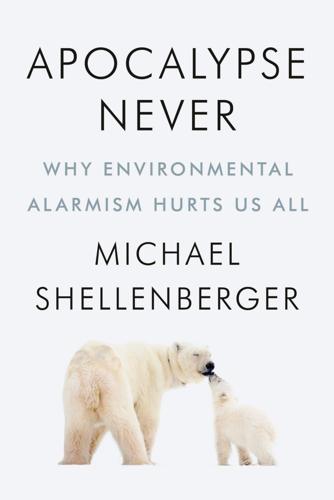
Apocalypse Never: Why Environmental Alarmism Hurts Us All
by
Michael Shellenberger
Published 28 Jun 2020
Throughout the next summer, Marchetti and a colleague inputted data from three hundred cases of energy transitions from around the world. The transitions were from wood to coal, whale oil to petroleum, coal to oil, and many other combinations. “I could not believe my eyes,” he wrote, “but it worked.”44 He added, “The whole destiny of an energy source seems to be completely predetermined in the first childhood.”45 The study of what we today call energy transitions was born. Wars, big changes in energy prices, and even depressions, Marchetti found, had no effect on the rate of energy transition. “It is as though the system had a schedule, a will, and a clock,” he wrote.46 Older histories emphasized the role of scarcity in raising prices and stimulating innovation, such as how Europeans had to import wood from increasingly distant forests, making it more expensive, and the newcomer fuel, coal, relatively cheaper.47 But Marchetti found that “the market regularly moved away from a certain primary energy source, long before it was exhausted, at least at world level.”48 While scarcity helps incentivize entrepreneurs like Drake’s investors to create alternatives, it is often rising economic growth and rising demand for a specific energy service, like lighting, transportation, heat, or industry, that allows fossil fuels to replace renewables, and oil and gas to replace coal.
…
And natural gas, or rather, its main component, methane, has four hydrogen atoms to one carbon atom, hence its molecular expression as CH4.52 As a consequence of these energy transitions, the carbon-intensity of energy has declined for more than 150 years. Between 1860 and the mid-1990s, the carbon intensity of primary global energy declined about 0.3 percent per year.53 Marchetti was right that human societies tend to move from energy-dilute to energy-dense fuels, but wrong that “the system had a schedule . . . and a clock.” While the direction of energy transitions he predicted was broadly correct, Marchetti’s timing was off. For example, in the United States, the share of electricity coming from coal declined from more than 45 percent in 2010 to just less than 25 percent in 2019.54 Europe saw similarly large declines in electricity from coal and increases from natural gas during the last two decades.55 Marchetti predicted the coal-to-gas transition would occur in the 1980s and 1990s and was thus two decades off.
…
“What probably sustains the whaling industry against the inroads of vegetable oil,” reported The New York Times in 1959, “is the desire of the whaling nations to conserve their foreign exchange. In general, they do not produce enough vegetable oil for their own needs and hence must either catch whales or buy fats and oil abroad.”100 The moral of the story is that economic growth and the rising demand for food, lighting, and energy drive product and energy transitions, but politics can constrain them. Energy transitions depend on people wanting them. When it comes to protecting the environment by moving to superior alternatives, public attitudes and political action matter. 7 Have Your Steak and Eat It, Too 1. Eating Animals When Jonathan Safran Foer was nine years old, he asked his babysitter why she wasn’t eating the chicken that he and his brother Frank were having.
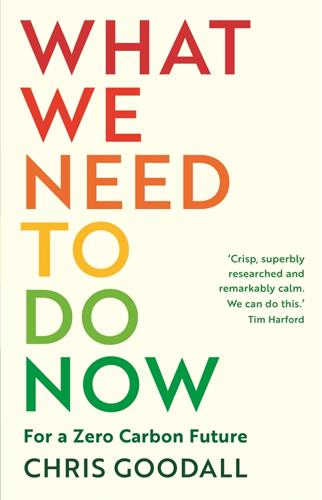
What We Need to Do Now: A Green Deal to Ensure a Habitable Earth
by
Chris Goodall
Published 30 Jan 2020
CLOTHING AND STUFF The website of Ellen MacArthur’s foundation (www.ellenmacarthurfoundation.org) contains much of interest on the circular economy, and clothing in particular. WRAP (www.wrap.org.uk), the waste minimisation institute, publishes consistently interesting material on cutting the use of resources. The work of the Energy Transitions Commission (www.energy-transitions.org) is exceptional and includes detailed reports on sectors of the economy which are most difficult to decarbonise. REFORESTATION George Monbiot, Feral (Penguin, 2014). This is only in part about reforestation, alerting us more widely to the damage to the environment caused by sheep grazing and offering climate-friendly solutions for the restoration of our environment.
…
And how do we reduce (as we must) the sales of clothing when over a third of a million people work in the fashion business? Some argue that a transition to zero emissions is impossible in a world controlled by short-term modern capitalism, noting that few shareholder-owned companies have done much to speed up the energy transition (although there are notable exceptions, often from Nordic Europe). Most fossil fuel businesses have doggedly opposed rapid change at the same time as shamelessly and relentlessly advertising minor initiatives to reduce responsibility for climate breakdown. However, my contention in this book is that a global carbon tax at a high enough level could rapidly rotate fossil fuel companies into allies in combating climate change.
…
This, again, will help counterbalance remaining greenhouse gas emissions. 9 Introduce a meaningful carbon tax, remitting its proceeds to the less well-off, with the principal objective of incentivising the big fossil fuel companies to switch from oil and gas to zero carbon energy. Capitalism can and should be the servant of the energy transition. 10 Research and plan geoengineering techniques. The world will need to have safe, equitable means to artificially hold down global temperatures. Although ‘geoengineering’ has its risks, we probably have no alternative if we want to keep global temperatures from rising more than 1.5 or 2 degrees celsius.

Taming the Sun: Innovations to Harness Solar Energy and Power the Planet
by
Varun Sivaram
Published 2 Mar 2018
After the nuclear false start, the world is running out of time to switch over to clean energy. It doesn’t help that global energy transitions take a very long time. As the energy scholar Vaclav Smil has pointed out, global energy transitions—for example, from wood to coal to oil—have each taken roughly a half-century.45 If the world can zero out its carbon emissions within a half-century, then it stands a chance of avoiding catastrophic climate change.46 But if the transition toward solar energy sputters by midcentury, there will be no opportunity for another do-over. A particularly rosy 2016 study suggested that a clean energy transition could happen much faster—in just a decade or two—with the right support from policymakers.47 And some argue that more sensible climate policies than the ones we have today are inevitable.
…
Varun Sivaram, Gireesh Shrimali, and Dan Reicher, “Reach for the Sun: How India’s Audacious Solar Ambitions Could Make or Break Its Climate Commitments,” Stanford Steyer-Taylor Center for Energy Policy and Finance, December 8, 2015, https://law.stanford.edu/reach-for-the-sun-how-indias-audacious-solar-ambitions-could-make-or-break-its-climate-commitments. 21. Varun Sivaram, “Can India Save the Warming Planet?” Scientific American (May 2017), https://www.scientificamerican.com/article/can-india-save-the-warming-planet. 22. “Financing India’s Energy Transition,” Bloomberg New Energy Finance, November 1, 2016, https://about.bnef.com/blog/financing-indias-clean-energy-transition. 23. Rajesh Kumar Singh and Saket Sundria, “Living in the Dark: 240 Million Indians Have No Electricity,” Bloomberg, January 24, 2017, https://www.bloomberg.com/news/features/2017-01-24/living-in-the-dark-240-million-indians-have-no-electricity. 24.
…
Stefan Nicola, Weixin Zha, and Lorenzo Totaro, “Solar Age’s First Eclipse Passes with Brief Surge in Power Price,” Bloomberg, March 20, 2015, https://www.bloomberg.com/news/articles/2015-03-20/eclipse-tests-european-power-grid-flooded-by-solar-farms-i7hlfkm0. 6. Soren Amelang and Jakob Schelandt, “Germany’s Electricity Grid Stable Amid Energy Transition,” Clean Energy Wire, October 24, 2016, https://www.cleanenergywire.org/factsheets/germanys-electricity-grid-stable-amid-energy-transition. 7. Amy Gahran, “Germany’s Course Correction on Solar Growth,” Greentech Media, November 3, 2016, https://www.greentechmedia.com/articles/read/germanys-course-correction-on-solar-growth. 8. Fraunhofer ISE, “Recent Facts About Photovoltaics in Germany,” Fraunhofer-Gesellschaft, 2017, https://www.ise.fraunhofer.de/en/publications/veroeffentlichungen-pdf-dateien-en/studien-und-konzeptpapiere/recent-facts-about-photovoltaics-in-germany.pdf. 9.
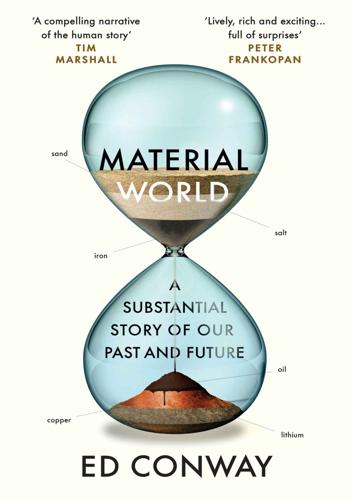
Material World: A Substantial Story of Our Past and Future
by
Ed Conway
Published 15 Jun 2023
Putting them in this order means we cover the first and then the second great energy transitions of the modern age: the adoption of fossil fuels and of electric power. The third and fourth energy transitions are covered in the oil section, which actually features both oil and gas. Having spent much of the book considering the materials which helped bring us the industrial revolutions of centuries gone by, we finish with the material which promises to deliver the next one. Lithium is at the heart of the next energy transition – away from fossil fuels and towards renewable resources. I have taken a few liberties along the way.
…
The generators and transformers of our electrical systems – made mostly of steel and copper – should be championed as among the most important (and for that matter brilliant) inventions in history, yet they usually get ignored in favour of the computer or the jet engine. So it goes in the Material World, but as it happens our reliance on copper will only build in the coming years as we exchange fossil fuel systems of heat and propulsion with electric ones. Before we get to that latest energy transition, though, it’s worth spending a moment contemplating the second great energy transition of the modern age. The coming of electricity, to farms in Tennessee and classrooms in the American Midwest, not to mention the homes of London and the Middle East, utterly transformed the world. When light could be summoned up with the flick of a switch rather than by striking a match, everything changed.
…
When I visited a few years ago I spent some hours driving through the maze of steel in a little electric golf buggy, trying to identify where the liquefaction actually took place, and failing. It was another baffling experience much like the Wesseling refinery in Cologne. Only here, the hydrocarbon is somewhat lighter, somewhat different. If oil marked the world’s third great energy transition – the moment we discovered how to refine petroleum, diesel and other petrochemicals from crude oil – then natural gas is sometimes described as marking the fourth energy transition. While oil is considerably more energy-dense than most types of coal, better-equipped to fuel internal combustion engines, gas is better still at turning fuel into power. Today’s gas turbines are the very best energy convertors in existence, which helps make gas the most efficient and least pollutive of all fossil fuels.

Power Hungry: The Myths of "Green" Energy and the Real Fuels of the Future
by
Robert Bryce
Published 26 Apr 2011
That reality was reflected in Copenhagen in December 2009 when leaders from 192 countries met for what the Associated Press called “the largest and most important UN climate change conference in history.”21 After two weeks of wrangling and lofty rhetoric, the meeting ended with an eminently predictable result: no legally binding agreement on any reductions in carbon emissions, only a promise to reduce emissions “individually or jointly,” and an agreement to meet again a year later in Mexico City to discuss all of the same contentious issues one more time.22 In short, all of these concerns, from worries that we have reached (or will soon reach) a peak in oil production and are (or will soon be) entering a period of inevitable decline, to the alarmist cries over impending global warming—and the supposed solutions to them—hinge on the belief that the transition away from hydrocarbons to renewable resources can be done quickly, cheaply, and easily. That. Is. Not. True. Tomorrow’s energy sources will look a lot like today’s, because energy transitions are always difficult and lengthy. “There is one thing all energy transitions have in common: they are prolonged affairs that take decades to accomplish,” wrote Vaclav Smil in November 2008. “And the greater the scale of prevailing uses and conversions, the longer the substitutions will take.”23 Smil, the polymath, prolific author on energy issues, and distinguished professor at the University of Manitoba, wrote that while a “world without fossil fuel combustion is highly desirable ... getting there will demand not only high cost but also considerable patience: coming energy transitions will unfold across decades, not years.”24 Indeed, energy transitions unfold slowly and are always under way whether we recognize them or not.
…
“And the greater the scale of prevailing uses and conversions, the longer the substitutions will take.”23 Smil, the polymath, prolific author on energy issues, and distinguished professor at the University of Manitoba, wrote that while a “world without fossil fuel combustion is highly desirable ... getting there will demand not only high cost but also considerable patience: coming energy transitions will unfold across decades, not years.”24 Indeed, energy transitions unfold slowly and are always under way whether we recognize them or not. Between 1973 and 2008, the amount of electricity generated in the United States with nuclear reactors increased by more than 800 percent. Nuclear power now accounts for about 20 percent of the electricity generated in America.
…
And that’s one of the biggest problems when it comes to energy transitions. We have invested trillions of dollars in the pipelines, wires, storage tanks, and electricity-generation plants that are providing us with the watts that we use to keep the economy afloat. The United States and the rest of the world cannot, and will not, simply jettison all of that investment in order to move to some other form of energy that is more politically appealing. Yes, we will gradually begin moving toward other forms of energy. But that move will be just that: gradual. And for those who doubt just how lengthy energy transitions can be, history offers some illuminating examples.
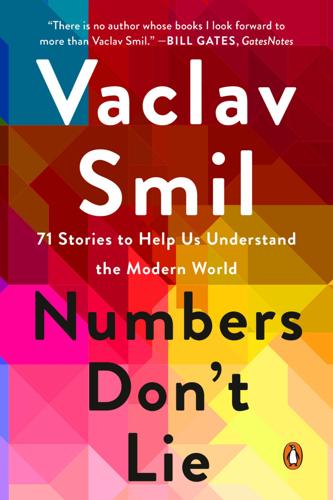
Numbers Don't Lie: 71 Stories to Help Us Understand the Modern World
by
Vaclav Smil
Published 4 May 2021
Data extracted November 2019. https://ec.europa.eu/eurostat/statistics-explained/pdfscache/45239.pdf. Vogt, L.J. Electricity Pricing: Engineering Principles and Methodologies. Boca Raton, FL: CRC Press, 2009. The inevitably slow pace of energy transitions International Energy Agency. World Energy Outlook 2019. Paris: IEA, 2019. https://www.iea.org/reports/world-energy-outlook-2019. Smil, V. Energy Transitions: Global and National Perspectives. Santa Barbara, CA: Praeger, 2017. Transport—How We Get Around Shrinking the journey across the Atlantic Griffiths, D. Brunel’s Great Western. New York: HarperCollins, 1996.
…
China Why manufacturing remains important Russia and the USA: How things never change Receding empires: Nothing new under the sun machines, designs, devices Inventions That Made Our Modern World How the 1880s created our modern world How electric motors power modern civilization Transformers—the unsung silent, passive devices Why you shouldn’t write diesel off just yet Capturing motion—from horses to electrons From the phonograph to streaming Inventing integrated circuits Moore’s Curse: Why technical progress takes longer than you think The rise of data: Too much too fast Being realistic about innovation FUELS AND ELECTRICITY Energizing Our Societies Why gas turbines are the best choice Nuclear electricity—an unfulfilled promise Why you need fossil fuels to get electricity from wind How big can a wind turbine be? The slow rise of photovoltaics Why sunlight is still best Why we need bigger batteries Why electric container ships are a hard sail The real cost of electricity The inevitably slow pace of energy transitions TRANSPORT How We Get Around Shrinking the journey across the Atlantic Engines are older than bicycles! The surprising story of inflatable tires When did the age of the car begin? Modern cars have a terrible weight-to-payload ratio Why electric cars aren’t as great as we think (yet) When did the jet age begin?
…
Not even the most optimistic forecast—that of the International Renewable Energy Agency—expects PV output to close that gap by 2030. But PV cells might be generating 10 percent of the world’s electricity by 2030. By that time, some seven decades will have passed since Vanguard 1’s small cells began to power its beacon transmitter, and some 150 years since the photovoltaic effect was first discovered in a solid. Energy transitions on a global scale take time. Why sunlight is still best You can roughly track the advance of civilization by the state of its lighting—above all, its power, cost, and luminous efficacy. That last measure refers to the ability of a light source to produce a meaningful response in the eye, and it is the total luminous flux (in lumens) divided by the rated power (in watts).

The Green New Deal: Why the Fossil Fuel Civilization Will Collapse by 2028, and the Bold Economic Plan to Save Life on Earth
by
Jeremy Rifkin
Published 9 Sep 2019
Kingsmill Bond, 2020 Vision: Why You Should See the Fossil Fuel Peak Coming, Carbon Tracker, September 2018, https://www.carbontracker.org/reports/2020-vision-why-you-should-see-the-fossil-fuel-peak-coming/ (accessed March 23, 2019), 31. 7. Kingsmill Bond, Myths of the Energy Transition: Renewables Are Too Small to Matter, Carbon Tracker, October 30, 2018, https://www.carbontracker.org/myths-of-the-transition-renewables-are-too-small/ (accessed March 23, 2019), 1. 8. Roger Fouquet, Heat, Power and Light: Revolutions in Energy Services (New York: Edward Elgar, 2008). 9. Bond, Myths of the Energy Transition, 3–4. 10. Bond, 2020 Vision, 4. 11. Ibid., 5. 12. Ibid., 32. 13. Bobby Magill, “2019 Outlook: Solar, Wind Could Hit 10 Percent of U.S.
…
According to a November 2018 study by Lazard—one of the world’s largest independent investment banks—the levelized cost of energy (LCOE) of large solar installations has plummeted to 36 dollars/megawatt hour, while wind has fallen to 29 dollars/megawatt hour, making them “cheaper than the most efficient gas plants, coal plants, and nuclear reactors.”16 “LCOE is an economic assessment of the average total cost to build and operate a power-generating asset over its lifetime divided by the total energy output of the asset over that lifetime.”17 Within the next eight years, solar and wind will be far cheaper than fossil fuel energies, forcing a showdown with the fossil fuel industry.18 The Carbon Tracker Initiative, a London-based think tank serving the energy industry, reports that the steep decline in the price of generating solar and wind energy “will inevitably lead to trillions of dollars of stranded assets across the corporate sector and hit petro-states that fail to reinvent themselves,” while “putting trillions at risk for unsavvy investors oblivious to the speed of the unfolding energy transition.”19 “Stranded assets” are all the fossil fuels that will remain in the ground because of falling demand as well as the abandonment of pipelines, ocean platforms, storage facilities, energy generation plants, backup power plants, petrochemical processing facilities, and industries tightly coupled to the fossil fuel culture.
…
According to Chairman Liu Zhenya, if we “can firmly grasp the historical opportunity for the Third Industrial Revolution, [it] will largely determine our position in future global competition.”50 In November 2014, President Xi Jinping surprised the world community by announcing his country’s commitment to increase the use of non–fossil fuel energies in primary energy consumption—primarily solar and wind—to 20 percent by 2030.51 Bloomberg New Energy Finance’s (BNEF) annual long-term economic analysis of the world’s power sector has China benefiting from having 62 percent of its electricity being supplied by renewables by 2050.52 This would mean that the majority of energy powering the Chinese economy would be generated at near-zero marginal cost, making China and the European Union the two most productive and competitive commercial spaces in the world. While China followed the EU’s lead in the first generation of the solar and wind energy transition, a visionary Chinese green energy pioneer, Li Hejun, the founder and CEO of Hanergy, leaped ahead in second-generation green energy adoption, becoming the world’s number-one solar thin-film producer. In his 2015 biography, China’s New Energy Revolution, Li Hejun said that he “was deeply moved [by the] powerful set of coordinates and insights” in The Third Industrial Revolution and was particularly struck by the contention that solar energy was “more suitable for future independent and distributed production.”53 In September 2013, Li Hejun, who at the time was also the vice chairman of the powerful All-China Federation of Industry and Commerce, invited me to Beijing to share the vision, theory, and practical application of renewable energies—and the role China might play in the next great energy revolution—with twenty of China’s key policy leaders, thought leaders, and entrepreneurs.
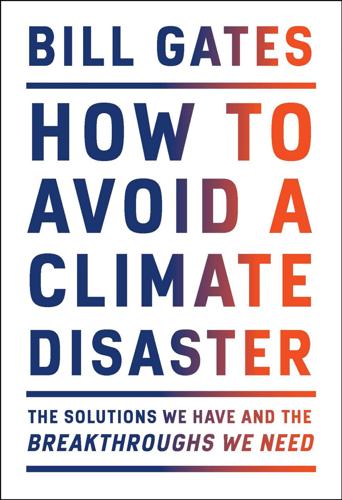
How to Avoid a Climate Disaster: The Solutions We Have and the Breakthroughs We Need
by
Bill Gates
Published 16 Feb 2021
But natural gas reached only 20 percent in the same amount of time. (Vaclav Smil, Energy Transitions) Natural gas followed a similar trajectory. In 1900, it accounted for 1 percent of the world’s energy. It took seventy years to reach 20 percent. Nuclear fission went faster, going from 0 to 10 percent in 27 years. This chart shows how much various energy sources grew over the course of 60 years, starting from the time they were introduced. Between 1840 and 1900, coal went from 5 percent of the world’s energy supply to nearly 50 percent. But in the 60 years from 1930 to 1990, natural gas reached just 20 percent. In short, energy transitions take a long time.
…
Judging only by how long previous transitions have taken, “as soon as possible” is a long time away. We have done things like this before—moving from relying on one energy source to another—and it has always taken decades upon decades. (The best books I have read on this topic are Vaclav Smil’s Energy Transitions and Energy Myths and Realities, which I’m borrowing from here.) Many farmers still have to use ancient techniques, which is one of the reasons they’re trapped in poverty. They deserve modern equipment and approaches, but right now using those tools means producing more greenhouse gases. For most of human history, our main sources of energy were our own muscles, animals that could do things like pull plows, and plants that we burned.
…
Fuel sources aren’t the only issue. It also takes us a long time to adopt new types of vehicles. The internal combustion engine was introduced in the 1880s. How long before half of all urban families had a car? Thirty to 40 years in the United States, and 70 to 80 years in Europe. What’s more, the energy transition we need now is being driven by something that has never mattered before. In the past, we’ve moved from one source to another because the new one was cheaper and more powerful. When we stopped burning so much wood and started using more coal, for example, it was because we could get a lot more heat and light from a pound of coal than from a pound of wood.

There Is No Planet B: A Handbook for the Make or Break Years
by
Mike Berners-Lee
Published 27 Feb 2019
The price of solar power has been coming down too, by about 20% every time the rate of installation doubles, and this may well continue for a long time12. The problem is that as the scale goes up, it becomes a lot harder to maintain the growth rate. Already it is starting to fall to around 30% per year. That is still huge, but the declining trend is not good. Sceptics of the solar silver bullet point out that energy transitions of the past – from animals to coal, from steam to internal combustion engines and so on – have taken a long time13. The counter argument is that never before has there been such a globally acknowledged imperative to make a fast energy switch for the sake of humanity, not to mention many other species.
…
There could be millions of species of these microscopic organisms, potentially giving us humans a wealth of genetic resources to tweak and develop efficient biofuel resources. However, algae are far from commercialisation, with challenges ranging from species selection (breeding and genetics) to refining and Should we frack? 79 processing of oils26. Exxon invested $100m in this before pulling out. At best it looks too far off to put into energy transition plans. So, to answer the question, biofuels in moderation are not entirely bonkers, but do need treating with a great deal of caution lest they become so. If carefully handled, they can provide a small but worth-having part of the energy mix. If an unregulated free market were allowed to run its course in the transition to a low carbon world they could be a disaster.
…
Solar, wind and hydro power don’t have this problem because they are in the form of electricity from the start. This means that if it is electricity that you need, a kilowatt hour of any of these is worth about two and a half kilowatt hours of coal or oil. This mark-up factor gives renewables a huge boost in the early stages of the clean energy transition. A similar mark-up also applies to land vehicles for almost the same reason. The efficiency of electric motors compared to 86 3 ENERGY internal combustion engines means that a unit of electricity can power a car two or three times further than the same energy in the form of liquid hydrocarbon.
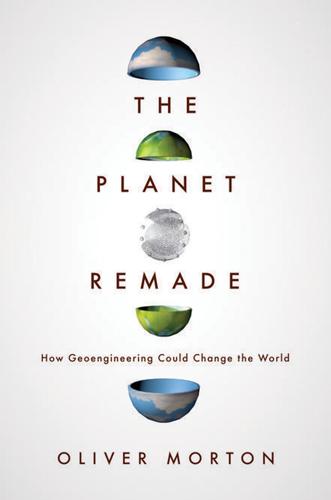
The Planet Remade: How Geoengineering Could Change the World
by
Oliver Morton
Published 26 Sep 2015
This fits with the lessons that Arnulf Grübler, an academic at the International Institute for Applied Systems Analysis outside Vienna, has drawn from decades spent studying the history of energy systems, and in particular the ‘energy transitions’ in which one energy technology displaces another; the steam engine replacing the draft animal and the waterwheel, for example. One general principle, he says, is that energy transitions have been slow – they take about a century. Things are different now, say the mainstream environmentalists and the environmentally conscious politicians in the Yes/No camp. Previous energy transitions were for the most part realized with no overarching plan. This one will be deliberate. And there has already been a renewables revolution on which the transition can be built.
…
And as far as the end user is concerned, renewable electricity is just another form of electricity – it offers no advantage as a means of powering things, even if generating the electricity that way has various charms. Its benefits are felt at the level of the system, not at the level of the individual buyer. That means a renewable-energy transition will need significant pushing. As with Grübler’s observations about the time transitions take, this points merely to decarbonization being unprecedented, not impossible. But the best example in recent history of an energy transition that governments tried to push through, rather than simply letting users pull, is not very encouraging. Governments in various countries pushed quite hard for a transition to nuclear power in the 1960s and 1970s.
…
The fuel costs for some renewables, on the other hand, are fixed and very low – wind, sunshine and the tendency of water to flow downhill come for free, and the plants grown to burn as biomass can often be furnished pretty cheaply, too. It is a fine list of benefits. But there is a second lesson from Grübler’s studies of past energy transitions to be confronted. They have, in the main, been driven not by the availability of new ways of providing energy, but by new ways of using it: transitions are pulled by demand, not pushed by supply. Electricity and internal combustion engines were adopted because they allowed people to do things they hadn’t done before, and people demanded those new energy services in ever-greater numbers.
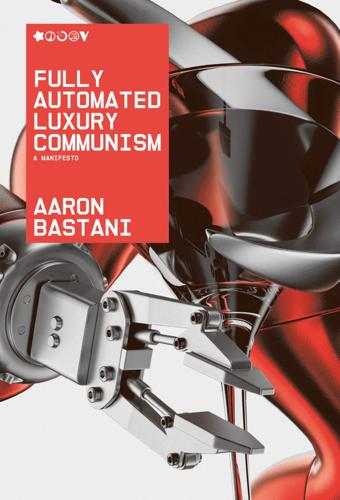
Fully Automated Luxury Communism
by
Aaron Bastani
Published 10 Jun 2019
Although its scale is so significant precisely because it will unfold in a multigenerational – and therefore unpredictable – manner, it must be present generations that take decisive action. Yet more than simply an intervention determining the future capacity of our planet to maintain life, the politics of energy transition must also articulate its ambition of bringing limitless energy to the world’s rich and poor alike. That is the prize on offer with solar and wind, almost as much as saving the planet, and should be stated as such when demanding energy transition alongside UBS. Switching to renewable energy won’t just mitigate increasingly chaotic climate systems, it will also deliver greater prosperity for all of us. But while the opportunities are huge, and the political scope for integrating ecology and economic development increasingly clear, there is little time to act.
…
Of course, profit wouldn’t be the bottom line, but as John Clancy has written, their returns from investments in overseas equities often prove distinctly underwhelming, which means funds are actively looking for more sustainable and, if necessary, local investments. In keeping with the new ethos of municipal protectionism, these banks would be similarly restricted in their lending both by amount and geographical area. What is more, their remit would be to maximise social value as well as returns, focusing on energy transition and accelerating specific sectors as well as financing a new wave of worker-owned business. The positive benefits of growing the cooperative and worker-owned economy are well documented, from helping deal with low productivity to under-investment in small and medium-sized enterprises – not to mention reducing economic and regional inequality.
…
In the Global North, where mass decarbonisation will start, this will be far simpler to administer as many countries have already hit a ceiling in terms of population and per capita energy use. What is more, they tend to enjoy robust state institutions and a significant base of renewable energy capacity. The worker-led economy will be financed by locally based and geographically restricted institutions. But because of the shortened timeframe, financing energy transition will be the responsibility for much larger National Energy Investment Banks (NEIBs) operating through regional hubs and capitalised – depending on the country – to the tune of hundreds of billions of pounds. Alongside financing renewable energy generation and storage for public buildings, homes and workplaces, with this new infrastructure being democratically owned at the local level, these banks will also offer credit for local energy cooperatives.

Energy and Civilization: A History
by
Vaclav Smil
Published 11 May 2017
Figure 7.3 Approximate estimates chart the shares contributed by major fuels to the Old World’s primary energy supply during the past 3,000 years (top). Reasonably accurate (except for the consumption of traditional biomass fuels) post-1850 statistics reveal successive waves of slow energy transitions (bottom): by 2010 crude oil was the leading fossil fuel, but coal and natural gas were not far behind. Plotted from data in UNO (1956) and Smil (2010a). My reconstruction of global energy transitions shows coal (replacing wood) reaching 5% of the global market around 1840, 10% by 1855, 15% by 1865, 20% by 1870, 25% by 1875, 33% by 1885, 40% by 1895, and 50% by 1900 (Smil 2010a). The sequence of years needed to reach these milestones was 15–25–30–35–45–55–60.
…
Maximum capacities are plotted from prime mover–specific sources cited in this book. Figure 7.3 Approximate estimates chart the shares contributed by major fuels to the Old World’s primary energy supply during the past 3,000 years (top). Reasonably accurate (except for the consumption of traditional biomass fuels) post-1850 statistics reveal successive waves of slow energy transitions (bottom): by 2010 crude oil was the leading fossil fuel, but coal and natural gas were not far behind. Plotted from data in UNO (1956) and Smil (2010a). Figure 7.4 Maximum capacities of prime movers predating 1700 and those introduced during the past three centuries. The largest turbogenerators are now six orders of magnitude (nearly two million times) more powerful than heavy draft horses, the most powerful animate prime movers.
…
Before 1950 gasoline and diesel engines became the dominant prime movers in transportation and steam turbines in the large-scale generation of electricity (Smil 2005); the widespread use of gas turbines (stationary for electricity generation or powering jetliners and ships) came only after 1960 (Smil 2010a). Recent studies of energy transitions demonstrate many commonalities governing these gradual shifts and identify major factors that have promoted or impeded the process (Malanima 2006; Fouquet 2010; Smil 2010a; Pearson and Foxon 2012; Wrigley 2010, 2013). These have ranged from technical imperatives, with prolonged periods of experimentation followed by a peak growth phase and upscaling (Wilson 2012), to some considerably earlier and faster transitions in small energy consumers (Rubio and Folchi 2012).
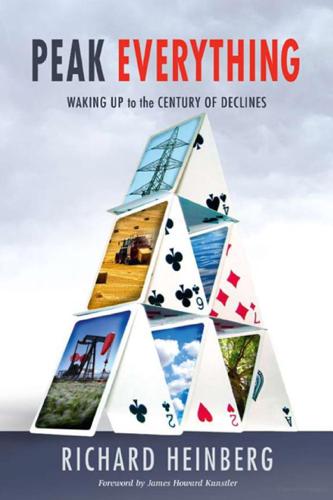
Peak Everything: Waking Up to the Century of Declines
by
Richard Heinberg
and
James Howard (frw) Kunstler
Published 1 Sep 2007
So the overall message of this book is not necessarily one of doom — but it is one of inevitable change and the need for deliberate engagement with the process of change on a scale and speed beyond anything in previous human history. Crucially: we must focus on and use the intangibles that are not peaking (such as ingenuity and cooperation) to address the problems arising from our overuse of substances that are. Our One Great Task: The Energy Transition As we have seen, just a few core trends have driven many others in producing the global problems we see today, and those core trends (including population growth and increasing consumption rates) themselves constellate around our ever-burgeoning use of fossil fuels. Thus, a conclusion of startling plainness presents itself: our central survival task for the decades ahead, as individuals and as a species, must be to make a transition away from the use of fossil fuels — and to do this as peacefully, equitably, and intelligently as possible.
…
Again, my thesis: many problems rightly deserve attention, but the problem of our dependence on fossil fuels is central to human survival, and so as long as that dependence continues to any significant extent we must make its reduction the centerpiece of all our collective efforts — whether they are efforts to feed ourselves, resolve conflicts, or maintain a functioning economy. But this can be formulated in another, more encouraging, way. If we do focus all of our collective efforts on the central task of energy transition, we may find ourselves contributing to the solution of a wide range of problems that would be much harder to solve if we confronted each one in isolation. With a coordinated and voluntary reduction in fossil fuel consumption, we could see substantial progress in reducing many forms of environmental pollution.
…
Perhaps unemployment will have to rise to 10 or 20 or 40 percent, with families begging for food in the streets, before embattled policy makers begin to reconsider their commitment to industrial agriculture. But even in that case, as in Cuba, all may depend upon having another option already articulated. Without that, we will be left to the worst possible outcome. Rather than consigning ourselves to that fate, let us accept the current challenge — the next great energy transition — as an opportunity not to try vainly to preserve business as usual (the American Way of Life that, we are told, is not up for negotiation), but rather to re-imagine human culture from the ground up, using our intelligence and passion for the welfare of the next generations, and the integrity of nature’s web, as our primary guides. 3 (post-) Hydrocarbon Aesthetics THOUGH I COULD HARDLY call myself a professional violinist these days, I still get the occasional call for a wedding or other special function, and I cherish these increasingly rare opportunities to work alongside competent players.

Less Is More: How Degrowth Will Save the World
by
Jason Hickel
Published 12 Aug 2020
As energy demand continues to rise, material extraction for renewables will become all the more aggressive – and the more we grow, the worse it will get. Even after achieving a full energy transition, to keep the global economy growing at projected rates would mean doubling the total global stock of solar panels, wind turbines and batteries every thirty or forty years, for ever. It’s important to keep in mind that most of the key materials for the energy transition are located in the global South. Parts of Latin America, Africa and Asia are likely to become the target of a new scramble for resources, and some countries may become victims of new forms of colonisation.
…
And natural gas is less intensive still.17 As the global economy has come to rely more on these less polluting fuels, one might think that emissions would begin to decline. This has happened in a number of high-income nations, but not on a global scale. Why? Because GDP growth is driving total energy demand up at such a rapid pace that these new fuels aren’t replacing the older ones, they are being added on top of them. The shift to oil and gas hasn’t been an energy transition, but an energy addition. The same thing is happening right now with renewable energy. Over the past couple of decades there has been extraordinary growth in renewable energy capacity, which is worth celebrating. In some nations, renewables have begun to displace fossil fuels. But on a global scale, growth in energy demand is swamping growth in renewable capacity.
…
If we don’t take precautions, clean energy firms could become as destructive as fossil fuel companies – buying off politicians, trashing ecosystems, lobbying against environmental regulations, even assassinating community leaders who stand in their way, a tragedy that is already unfolding.22 This is important. Progressives who promote the idea of a Green New Deal or other plans for rapid energy transition also tend to promote values of social and ecological justice. If we want the transition to be just, we need to recognise that we cannot increase our use of renewable energy indefinitely. Some hope that nuclear power will help us get around these problems – and surely it will need to be part of the mix.
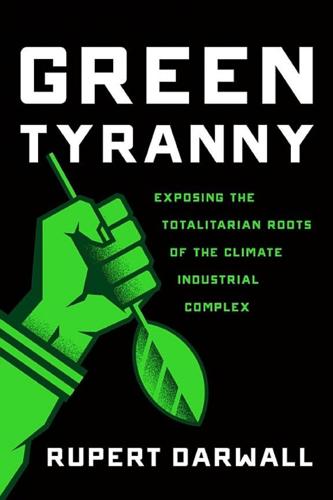
Green Tyranny: Exposing the Totalitarian Roots of the Climate Industrial Complex
by
Rupert Darwall
Published 2 Oct 2017
Quitting Paris, in what hedge fund manager Tom Steyer called a “traitorous act of war against the American people,” turns the United States into the biggest winner from Paris.2 Access to cheap energy gives American businesses and workers a colossal competitive advantage in world markets as other nations increasingly burden themselves with high-cost, unreliable wind and solar energy. What is it about wind and solar? Sanctimonious European leaders parading their moral superiority overlook Germany’s epic climate fail. The fall in German power-station emissions stalled and then began to reverse as wind and solar capacity increased. Germany’s Energiewende (Energy Transition) is reckoned to cost up to €1 trillion ($1.12 trillion) by the end of the 2030s. Yet the big falls in carbon dioxide emissions happened in the wake of German reunification (cost: €1.3 trillion) as East Germany’s inefficient, communist-era economy was closed down. What they do tells us more than what they say.
…
Germany’s chief solar lobbyist and architect of the renewable energy law was inspired by an early-twentieth-century scientist, Wilhelm Ostwald. Much as modern environmentalists do, Ostwald believed that society’s energy consumption should be no greater than what the Earth receives each year from the sun (Chapter 12). The renewable energy transition would cost the equivalent of a scoop of ice cream on monthly electricity bills, the Greens claimed. Nine years after the scoop of ice cream came a revised price tag—€1 trillion ($1.13 trillion). Soaring electricity bills led to a consumer backlash. Renewables turned out to be an engine of financial destruction, costing shareholders of the three quoted German utility companies nearly €70 billion ($79b) and consumers €269 billion ($304b) in higher electricity bills.
…
Fischer wanted an “entrepreneurial left” to make profits from a steadily growing environmental sector of the economy.10 The 1998 election that brought Fischer and the Greens into the federal government was not, however, a mandate to turn Germany green. In part, Germany’s Energiewende—normally translated as Energy Transition, though Wende implies something big and significant*—was the product of a specific set of circumstances. In part, it was the outcome of a small group acting more like a revolutionary cell than a democratic party to bring about the most far-reaching changes to the electricity system since Edison first flicked the switch that brought electric light from the Pearl Street generator.
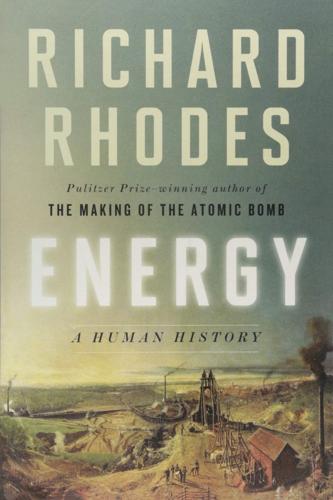
Energy: A Human History
by
Richard Rhodes
Published 28 May 2018
The US Census for 1930 found three times as many registered Percherons in America as the other four draft breeds combined. Horses increased in number after the commercialization of the steam engine because horsepower filled the niche below steam power. A horse stood ready to pull a cart or plow a field on command, without the delay of building up a head of steam. Energy transitions are seldom so complete that they drive out every competitor. Much of the world still relies on animals for farm work and transportation: horses, oxen, camels, llamas, water buffalo, elephants, even fellow humans. Feeding the urban fleet of horses hay and grain supported many thousands of farmers.
…
They estimated as well, “on the basis of global projection data that take into account the effects of the Fukushima accident,” that “nuclear power could additionally prevent an average of 420,000–7.04 million deaths and 80–240 [gigatons of CO2-equivalent] emissions due to fossil fuels by midcentury [2050], depending on which fuel it replaces.”45 This projection, needless to say, assumes that nuclear power will continue to find political support as one component of the largest energy transition in human history, the ultimate transition, the one the world faces today as it confronts global climate change. Or can renewables save the day? * * * I. Trofim Denisovich Lysenko was a Soviet biologist who promoted a pseudoscientific theory of the inheritance of acquired characteristics.
…
With support from the Club of Rome, IIASA was established in 1972 as a think tank that might bridge the increasing digital (and continuing political) divide between the United States and Europe and the Soviet bloc countries. Marchetti’s earlier work had been in nuclear power technology, including reactor design and nuclear waste processing. His interest at IIASA has been energy, especially modeling the regularities of energy transitions. An informative graph based on research he and his colleagues pursued in the late 1970s drew my attention. In an autobiographical sketch, Marchetti writes that he was asked when he joined IIASA in 1973 to find “a simple and predictive model describing energy markets for the last century or so.”
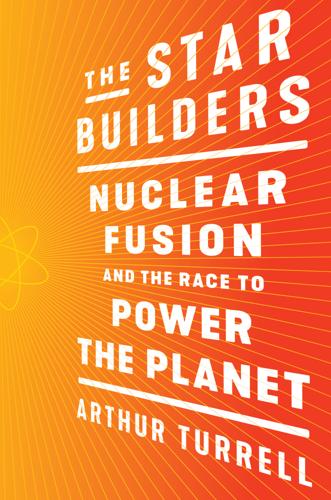
The Star Builders: Nuclear Fusion and the Race to Power the Planet
by
Arthur Turrell
Published 2 Aug 2021
BP, Statistical Review of World Energy 2020 (British Petroleum, 2020); UK Government, Digest of United Kingdom Energy Statistics 2020 (UK Department of Business, Energy and Industrial Strategy, 2020); R. Fouquet, Heat, Power and Light: Revolutions in Energy Services (Cheltanham, UK: Edward Elgar Publishing Limited, 2008); R. Fouquet, “Consumer Surplus from Energy Transitions, Energy Journal 39 (2018); V. Smil, Energy Transitions: History, Requirements, Prospects (Westport, CT: Praeger, 2010); H. Ritchie, Energy. Our World in Data (2014), https://ourworldindata.org/energy. 6. T. Cowan, “Want to Help Fight Climate Change? Have More Children,” Bloomberg (2019), https://www.bloomberg.com/opinion/articles/2019-03-14/want-to-help-fight-climate-change-have-more-children; M.
…
BP, Statistical Review of World Energy 2020 (British Petroleum, 2020). 20. BP, Statistical Review of World Energy 2020 (British Petroleum, 2020); V. Smil, Energy Transitions: History, Requirements, Prospects (Westport, CT: Praeger, 2010); H. Ritchie, Our World in Data (2014), https://ourworldindata.org/energy. 21. R. Fouquet, Heat, Power and Light: Revolutions in Energy Services (Cheltenham, UK: Edward Elgar Publishing Limited, 2008); V. Smil, Energy Transitions: History, Requirements, Prospects (Westport, CT: Praeger, 2010); H. Ritchie, “Energy,” Our World in Data (2014), https://ourworldindata.org/energy; BP, Statistical Review of World Energy 2020 (British Petroleum, 2020); International Energy Agency, Key World Energy Statistics (International Energy Agency, 2014); “The Pandas Development Team,” Pandas-dev/pandas: Pandas, Zenodo, 2020, doi:10.5281/zenodo.3509134; J.
…
BP, Statistical Review of World Energy 2019 (British Petroleum, 2019); IEA, World Energy Outlook 2019 (IEA, 2019); A. Kahan, “EIA Projects Nearly 50% Increase in World Energy Usage by 2050, Led by Growth in Asia” (US Energy Information Administration, 2019), https://www.eia.gov/todayinenergy/detail.php?id=41433#; V. Smil, Energy Transitions: History, Requirements, Prospects (Westport, CT: Praeger, 2010); H. Ritchie, Our World in Data (2014), https://ourworldindata.org/energy. 10. BP, Statistical Review of World Energy 2020 (British Petroleum, 2020). 11. BP, Statistical Review of World Energy 2020 (British Petroleum, 2020). 12.

The Entrepreneurial State: Debunking Public vs. Private Sector Myths
by
Mariana Mazzucato
Published 1 Jan 2011
Many who write on the subject of energy policy forget that until wind turbines and solar PV panels (the focus of Chapter 7) can produce energy at a cost equal to or lower than those of fossil fuels they will likely continue to be marginal technologies that cannot accelerate the transition so badly needed to mitigate climate change. Understanding how businesses transform government support mechanisms into lower-cost, higher-performance products through the innovation process is typically the ‘missing link’ in discussions of energy policy, and this missing link can undermine not just our desire to push an energy transition – but to do it with high-road investments in innovation. State support for clean technologies must continue until they overcome the sunk-cost advantage of incumbent technologies, and these sunk costs are a century long in some cases. That is why much of this chapter focuses on supply-side support mechanisms (although I of course also discuss crucial demand-side policies).
…
Funding a Green Industrial Revolution First, what is a ‘green industrial revolution’? There are many ways to conceptualize a green industrial revolution, but the basic premise is that the current global industrial system must be radically transformed into one that is environmentally sustainable. Sustainability will require an energy transition that places non-polluting clean energy technologies at the fore. It moves us away from dependence on finite fossil and nuclear fuels and favours ‘infinite’ sources of fuel – the ‘renewable’ fuels that originate from the sun. Building a sustainable industrial system also requires technologies for recyclable materials, advanced waste management, better agricultural practices, stronger energy efficiency measures across sectors, and water desalinization infrastructures (to address resource and water scarcity, for instance).
…
It is also an issue that can be partially ‘solved’ with the aid of non-renewable technologies like nuclear power or carbon sequestration. Is that really what we want? Deployment of resources meant to facilitate the innovative process must occur alongside the courage to set a technological direction and follow it. Leaving direction setting to ‘the market’ only ensures that the energy transition will be put off until fossil prices reach economy-wrecking highs. Pushing – Not Stalling – Green Development The history of US government investment in innovation, from the Internet to nanotech, shows that it has been critical for the government to have a hand in both basic and applied research.
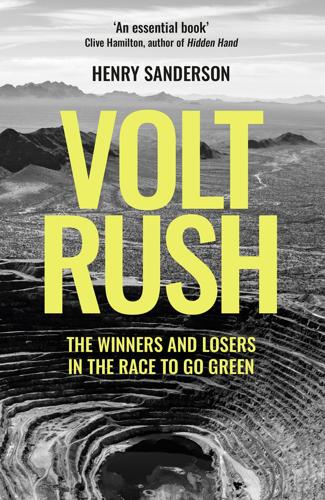
Volt Rush: The Winners and Losers in the Race to Go Green
by
Henry Sanderson
Published 12 Sep 2022
Chapter 11 The Green Copper Tycoon 1 Robert Friedland, keynote speech at the Prospectors and Developers Association of Canada (PDAC) conference in Toronto, March 2020, www.youtube.com/watch?v=h-FbTqJW6eg. 2 Gates, B., How to Avoid a Climate Disaster: The Solutions We Have and the Breakthroughs We Need (London, Allen Lane, 2021), p. 41. 3 Ibid., p. 79. 4 See Koelsch, J., ‘Chinese firms position for an energy transition copper supercycle’, Baker Institute Blog, 5 April 2021, http://blog.bakerinstitute.org/2021/04/05/chinese-firms-position-for-an-energy-transition-copper-supercycle/: ‘For instance, every thousand battery electric vehicles (BEVs) produced can require approximately 83 metric tonnes (MT) of copper (well more than triple conventional vehicles at 23 MT), while wind turbines incorporate 3.6 MT of copper per megawatt (MW) of output, photovoltaic cells 4-to-5 MT per MW, and flywheels for pumped hydropower 0.3-to-4 MT per MW.’ 5 Azadi, M., Northey, S.A., Ali, S.H. et al., ‘Transparency on greenhouse gas emissions from mining to enable climate change mitigation’, Nature Geoscience, 13 (2020), 100–4. 6 ‘CRU/CESCO-WRAPUP 1 – As copper projects rev up, deficit still seen’, Reuters, 8 April 2010. 7 Lipton, E., Searcey, D., ‘How the US lost ground to China in the contest for clean energy’, New York Times, 21 November 2021. 8 Isaacson, W., Steve Jobs: The Exclusive Biography (New York, Simon & Schuster, 2015), p. 37. 9 Brennan, The Bite in the Apple, p. 85. 10 Ibid. 11 Isaacson, Steve Jobs, p. 39. 12 McNish, The Big Score, p. 26. 13 ‘Controversial investor makes Burma centrepiece of Asian plan’, Inter Press Service News Agency, 10 December 1996. 14 Larmer, M., ‘At the crossroads: mining and political change on the Katangese-Zambian copperbelt’, Oxford Handbooks Online, July 2016, www.oxfordhandbooks.com/view/10.1093/oxfordhb/9780199935369.001.0001/oxfordhb-9780199935369-e-20?
…
A man who had led Glencore’s coal business in Asia and Australia, building it up through acquisitions, had vowed to not make any more in coal. It also went against his beliefs that coal would still be needed in the future, in countries such as Pakistan, India, Malaysia and Vietnam. ‘What transition?’ Glencore’s chairman Tony Hayward had asked at a FT conference the previous year in response to a question about the energy transition. The Glencore men told things as they were, not how they hoped them to be. It was an attitude similar to the first lines of V.S. Naipaul’s book, A Bend in the River, about the Congo: ‘The world is what it is; men who are nothing, who allow themselves to become nothing, have no place in it.’ Now for the first time since Marc Rich founded the company, it was publicly making a commitment to the planet’s well-being.
…
Gécamines said all that money could be traced in its accounts, ‘dollar by dollar,’ he said. ‘Their [NGOs’] only objective is the destabilisation of the DRC to serve without hindrance, in the name of pseudo-democratic ideals, foreign demand for cobalt, coltan, copper, gallium, germanium and other strategic minerals that the world so badly needs to ensure its energy transition,’ Yuma said. 9 Blood Cobalt ‘No one wants to touch ASM [artisanal mining] with a bargepole.’ Head of procurement at a carmaker ‘The economic history of Congo is one of improbably lucky breaks. But also of improbably great misery. As a result, not a drop of the fabulous profits trickled down to the larger part of the population.’

Shocks, Crises, and False Alarms: How to Assess True Macroeconomic Risk
by
Philipp Carlsson-Szlezak
and
Paul Swartz
Published 8 Jul 2024
Physical structures typically depreciate slowly, adding to the capital stock for multiple decades—but software may last for four or five years, meaning no effect on the capital stock after that period (right panel of figure 5.6). This mix-shift adds to the challenge of needing to run faster just to stand still. An additional challenge is that many critically important investments—such as decarbonization technology for the energy transition—may be replacing rather than supplementing capital. For example, shutting down a coal-fired plant and replacing it with wind turbines amounts to a complete depreciation of that portion of the capital stock.8 Other technologies, such as carbon capture, may target costs that are not accounted for in GDP (the externality of pollution in this example).
…
Its initial ambitions for a new New Deal were thwarted because of resistance within the Democratic party.5 More-conservative members of the party rejected supersize stimulus, even if a significant boost eventually came in the form of the Inflation Reduction Act (which predominantly finances investments in infrastructure and the energy transition). Should we expect the future of political constraints on stimulus to change? There is less certainty here than with the other three risks discussed in this chapter. Political interests and power have always been, and always will be, in flux. How these interact with the politics of stimulus will depend on the idiosyncratic circumstances in Washington at any given time.
…
But sustained deficits and elevated debt levels do push up rates, all other things being equal—making debt dynamics less attractive.9 Additionally, if markets perceive deficits as profligate or policymakers as uncredible, particularly when there is no weak economic backdrop to warrant deficits, rates can move quickly to push back against profligacy—particularly when long-term inflation expectations are unanchored. While g-versus-r dynamics over the past decade have been part of the reason fiscal capacity was so strong, they will not eliminate the need for tough choices in the future. These choices must account for long-term investment needs—ranging from decarbonization and the energy transition, to an aging population, and to increased military spending—as well as for short-term political realities. It remains certain that these choices are better made when debt dynamics are favorable than it is to wait until markets force those difficult and painful choices over a short time horizon.

Not the End of the World
by
Hannah Ritchie
Published 9 Jan 2024
(Yes, that seems hard to believe. Stay with me and I’ll explain why.) Here I’m using the term ‘generation’ loosely. I am from a generation that will be defined by our environmental problems. I was a child when climate change really came on the radar. Most of my adulthood will be spent in the midst of the major energy transition. I will see countries move from being almost entirely dependent on fossil fuels to being free of them. I will be 57 when governments hit the ‘2050 deadline’ of reaching net-zero carbon emissions that so many have promised. In writing this book, I feel like I am representing a generation of young people that want to see the world change.
…
Low-carbon technologies are getting cheaper and cheaper I have a habit of underestimating how quickly things can change. Most of us have been too pessimistic about renewable energy in the past, even the experts. Part of the reason I thought that 2°C was so far out of reach was that I couldn’t see how low-carbon energy could grow quickly enough. Historically, energy transitions have been very slow. The scientist Vaclav Smil has shown this many times in his work.14 –16 Remaking energy systems and shifting from one source to another, whether it was from wood to coal or coal to oil, happened over many decades, if not longer. And coal, oil and gas were just so much cheaper than solar or wind, especially with large fossil fuel subsidies.
…
Those that say low-carbon energy will use too many materials should take a look at how much we currently mine for fossil fuels. The world extracts around 15 billion tonnes of coal, oil and gas every year. The International Energy Agency projects that the world will need around 28 to 40 million tonnes of minerals for low-carbon technologies in 2040, at the height of the energy transition.28 That’s 100 to 1,000 times lower than fossil fuels. Of course, rocks are not made of pure minerals; the minerals are often in much lower concentrations, so the total amount of rock we’ll have to move will be higher. But the same is true for fossil fuel mining: to get those 15 billion tonnes of fuel, we dig a lot more stuff out of the earth.

A Line in the Tar Sands: Struggles for Environmental Justice
by
Tony Weis
and
Joshua Kahn Russell
Published 14 Oct 2014
It could inform specific interventions at the scale of workplaces and building workers’ collective capacities, such as: the incorporation of carbon-reduction strategies within collective agreements through clauses on reductions of the carbon footprint, energy committees, and adjustment plans for jobs affected by climate change; workers’ plans forged to extend best practices for carbon reduction in labour processes and between workplaces; building democratic planning capacities for plant conversion to sustain capital equipment, workers’ skills, and community infrastructure as ecologically responsible production norms are internalized; and participatory planning structures built at the level of local wards for carbon reduction and ecological clean-up in neighbourhoods. An energy transition extends beyond particular labour processes, and the fossil fuel branches of production, to the energy sector as a whole.22 In providing the general conditions facilitating production and consumption, the energy sector tends to be both highly concentrated and monopolistic, as well as highly decentralized and diversified. An energy transition entails concerns not only with the phasing out of fossil fuel production (and immediate limits on extreme energy, such as the tar sands) and the reversal of the neo-liberal privatization of power supplies.
…
In a striking example of market fetishism, more prices and more markets are proposed. Nature and pollution are put forward as new zones of accumulation, with the state facilitating the creation of markets and property rights where none existed before. With more complete and transparent markets, capitalist growth will be “greener,” and an energy transition from fossil fuels towards renewables will “naturally” occur via firm responses to more efficient price signals. “Green jobs” will follow in due course. The market imperatives that drive capital accumulation and carbon emissions are now offered up, without any sense of paradox or doubt, as the solution to the climate crisis.
…
But this should not be exaggerated (as renewables producers do), as this is still quite capital-intensive production. A shift to renewable energy is a solution to neither the general problem of unemployment in capitalism, nor to the employment instability resulting from climate change. The political imaginary of a climate justice movement cannot be confined, therefore, to a market-led energy transition, whether spurred by further institutional coordination or not. It can become a vital example of societal political alliances co-joining in programmatic alternatives. At the scale of the workplace, this struggle has formed around the notion of a just transition. As noted above, this is set narrowly as retraining policies for workers as fossil fuel extraction is phased down and workers shift to indeterminate prospects elsewhere in the economy.

Shutdown: How COVID Shook the World's Economy
by
Adam Tooze
Published 15 Nov 2021
But unlike CARES in 2020 or the Rescue Plan of March 2020, which disbursed trillions in a matter of months, these are long-term programs stretching out over a horizon of eight to ten years. Aspirationally, before haggling with Congress began, they amounted to roughly 2 percent of American GDP per annum. Spread across priorities ranging from childcare to the energy transition, that was far too little to effect a transformation of American society or to put the United States on course to climate stabilization. Especially with regard to the energy transition, they appeared to rest on optimistic assumptions about the private investment that would be triggered by modest public stimulus combined with regulatory change. When it came to long-term policy, Bidenomics was a continuation of the public-private, blended finance, Frankenstein policies that had been so typical of the crisis-fighting in 2020.
…
In fact, it was increasingly clear that the gods, at least as represented by the nature goddess Gaia, were at odds with economic growth full stop.15 Climate change, which had once been a preoccupation of the environmental movement alone, became an emblem for a wider imbalance between nature and humanity. Talk of “Green Deals” and of the energy transitions was everywhere. And then, in January 2020, the news broke from Beijing. China was facing a full-blown epidemic of a novel coronavirus. It was by that point already worse than the SARS outbreak, which in 2003 had sent shivers down the spine. This was the natural “blowback” that environmental campaigners had long warned us about, but whereas climate change caused us to stretch our minds to a planetary scale and set a timetable in terms of decades, the virus was microscopic and all-pervasive and was moving at a pace of days and weeks.
…
Member states would access their allocation of funding by submitting national recovery and resilience plans to the European Commission, which would pass them for approval to the European Council.37 Those plans were expected to meet the priorities of the Green Deal. The EU would use the crisis to supercharge a program of energy transition. Thirty percent of the combined EU budget and Next Generation EU package, €555 billion over 2021–2027, was to be directed toward climate policy.38 For the EU, it marked a moment of relaunch.39 Since the climax of the eurozone crisis in 2012, the lack of progress on deeper integration had been demoralizing.
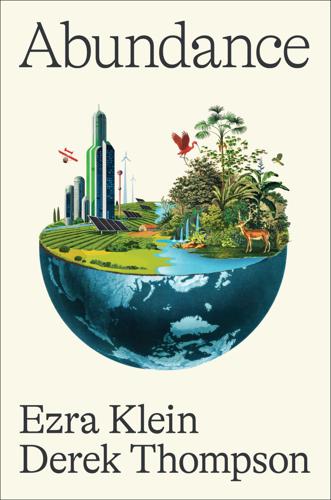
Abundance
by
Ezra Klein
and
Derek Thompson
Published 18 Mar 2025
“And if you’d told me nearly 20 years ago what would be the case now, 20 years later, I would have just said you were crazy. I would have laughed in your face. There is genuinely a revolution happening.”17 In a thrilling paper with the very un-thrilling title “Empirically Grounded Technology Forecasts and the Energy Transition,” a team of researchers found that the price of oil, gas, and coal, after adjusting for inflation, is about what it was 140 years ago.18 But renewable energy keeps crushing expectations. The authors looked at 2,905 projections for solar costs made by the most popular forecasting models and found that solar costs were expected to fall by 2.6 percent a year and never by more than 6 percent.
…
dgcid=author. 17. David Wallace-Wells, “What Will We Do with Our Free Power?,” New York Times, August 28, 2024, https://www.nytimes.com/2024/08/28/opinion/solar-power-free-energy.html 18. Rupert Way, Matthew C. Ives, Penny Mealy, and J. Doyne Farmer, “Empirically Grounded Technology Forecasts and the Energy Transition,” Joule 6 (September 2022): 2057–082, https://www.cell.com/action/showPdf?pii=S2542-4351%2822%2900410-X. 19. US Energy Information Administration, “Levelized Costs of New Generation Resources in the Annual Energy Outlook 2022,” p. 3, table 1a; p. 8, table 1b; p. 9. 20. Bill McKibben, “In a World on Fire, Stop Burning Things,” New Yorker, March 18, 2022, https://www.newyorker.com/news/essay/in-a-world-on-fire-stop-burning-things?
…
Institute for Energy Research, “Chinese Solar Panel Production Issues Are Mounting,” November 18, 2020, https://www.instituteforenergyresearch.org/renewable/solar/chinese-solar-panel-production-issues-are-mounting/. 41. International Renewable Energy Agency, “Solar Energy,” n.d., https://www.irena.org/Energy-Transition/Technology/Solar-energy#:~:text=The%20cost%20of%20manufacturing%20solar,93%25%20between%202010%20and%202020. 42. Hannah Ritchie, Max Roser, and Pablo Rosado, “Renewable Energy,” December 2020, rev. January 2024, https://ourworldindata.org/renewable-energy. 43. Myra Saefong, “Why Solar Is the Fastest-Growing Source of U.S.

Climate Change
by
Joseph Romm
Published 3 Dec 2015
Moreover, the overwhelming majority of people who use the term certainly do not mean it in that sense. That said, people who use the term would be well advised to explain what they do and do not mean by it. 6 THE ROLE OF CLEAN ENERGY This chapter will focus on the energy technologies most widely discussed for a transition to a low carbon economy. It will explore the scale of the energy transition needed to explain why some energy technologies are considered likely to be major contributors to the solution and others not. What kind of changes in our energy system would a 2°C target require? To have a significant chance of keeping total warming below 2°C, we need to cut global emissions of carbon dioxide and other major greenhouse gas (GHG) pollutants by more than 50% by mid-century.
…
It is ironic, as one of the Stanford authors noted, “At the moment, Germany makes up about 40% of the installed market, but sunshine in Germany isn’t that great. So from a system perspective, it may be better to deploy PV systems where there is more sunshine.” Germany has done the world a great favor by investing so heavily in its renewable energy transition, which has helped to bring down the cost of solar energy for every country. However, solar power is considerably more cost-effective in places where it is sunnier longer during both the day and year, such as the Southwest United States and the Middle East. This is another reason we can expect the amount of solar PV generated to continue its rapid increase.
…
These include extracting energy from the tides and from waves, as well as ocean thermal energy conversion, which uses the temperature difference between warm shallow water and cooler deep water to generate electricity. Currently, these are niche technologies whose future potential is unknown, but at this point, they do not seem significant relative to the scale of the energy transition required to stabilize at or near 2°C. Finally, fusion remains a popular long-term hope for carbon-free power, as it has for a half-century now. Re-creating the sun’s power source on Earth in a practical and cost-effective fashion has proved intractable even after decades of research. We currently do not know whether practical or affordable fusion is possible.

This Changes Everything: Capitalism vs. The Climate
by
Naomi Klein
Published 15 Sep 2014
The cities of Frankfurt and Munich, which had never sold off their energy grids, had already joined the transition and pledged to move to 100 percent renewable energy by 2050 and 2025, respectively. But Hamburg and Berlin, which had both gone the privatization route, were lagging behind. And this was a central argument for proponents of taking back Hamburg’s grid: it would allow them to get off coal and nuclear and go green.5 Much has been written about Germany’s renewable energy transition—particularly the speed at which it is being achieved, as well as the ambition of its future targets (the country is aiming for 55–60 percent renewables by 2035).6 The weaknesses of the program have also been hotly debated, particularly the question of whether the decision to phase out nuclear energy has led to a resurgence of coal (more on that next chapter).
…
Yet in the process of trying to achieve that goal, these residents discovered that they had no choice but to knock down one of the core ideological pillars of the free market era: that privately run services are always superior to public ones. It was an accidental discovery very similar to the one Ontario residents made when it became clear that their green energy transition was being undermined by free trade commitments signed long ago. Though rarely mentioned in climate policy discussions, there is a clear and compelling relationship between public ownership and the ability of communities to get off dirty energy. Many of the countries with the highest commitments to renewable energy are ones that have managed to keep large parts of their electricity sectors in public (and often local) hands, including the Netherlands, Austria, and Norway.
…
Current experience from around the world, including the markets of Europe, also shows that private companies and electricity markets cannot deliver investments in renewables on the scale required.”16 Citing various instances of governments turning to the public sector to drive their transitions (including the German experience), as well as examples of large corporate-driven renewable projects that were abandoned by their investors midstream, the Greenwich research team concludes, “An active role for government and public sector utilities is thus a far more important condition for developing renewable energy than any expensive system of public subsidies for markets or private investors.”17 Sorting out what mechanisms have the best chance of pulling off a dramatic and enormously high-stakes energy transition has become particularly pressing of late. That’s because it is now clear that—at least from a technical perspective—it is entirely possible to rapidly switch our energy systems to 100 percent renewables. In 2009, Mark Z. Jacobson, a professor of civil and environmental engineering at Stanford University, and Mark A.

The Climate Book: The Facts and the Solutions
by
Greta Thunberg
Published 14 Feb 2023
The countries and companies that reap the benefits will be those that are ahead of the curve and shape the transition, as opposed to those that seek to hold on to the fading past. It is incumbent on governments to protect and help those who are collateral damage in the energy transition, for example coal miners, but not those that choose to impede it, like some powerful corporations. The amount of time available to make the energy transition is vanishing. To achieve it, we need all the tools in the toolbox. Technology alone is unlikely to solve the problem, and technologies also come with a variety of risks and challenges of their own. Behavioural change in isolation is unlikely to solve the problem, but ignoring it makes the challenge even harder.
…
Electric cars are a stopgap, in one sense, until the moment when we’ve built decent systems of electrically powered public transit. If we use cheap renewable energy to build ever bigger homes and stuff them with ever more junk, then we’ll still use up the world’s farms and forests, still kill off its animals. An energy transition may be our most immediate crisis, but it’s far from the only peril we face. Still, we shouldn’t underestimate the potential of this moment. One way to think of it is: we’ve now reached the point when we need to stop burning things on the surface of the Earth. We shouldn’t be digging down to find coal and gas and oil and setting them on fire – that’s dirty, dangerous and depressing.
…
In practice, countries must implement whatever policies and incentives that will work for them, even if they are far from perfect. While such a mosaic of policies and incentives may be the nightmare of economists, the climate system does not allow us the time to find the perfect policy solution that is acceptable to all. The energy transition is also going to inflict pain on some while bringing rewards to others. This is unavoidable, but the world is full of examples of these transformative shifts. From horses to cars, typewriters to computers, landlines to mobile phones, petrol to electric cars, fossil power to renewable power. Many of these transitions are not driven by policy but by technology and society.

The End of Growth: Adapting to Our New Economic Reality
by
Richard Heinberg
Published 1 Jun 2011
David Stern, “Energy Mix and Energy Intensity,” Stochastic Trend, posted April 17, 2010, stochastictrend.blogspot.com/2010/04/energy-mix-and-energy-intensity.html. 20. Cutler J. Cleveland, “Energy Quality, Net Energy and the Coming Energy Transition,” in Frontiers in Ecological Economic Theory and Application, Jon D. Erickson and John M. Gowdy, eds. (Cheltenham, UK: Edward Elgar, 2007), pp. 268–284. 21. Cleveland, “Energy Quality, Net Energy, and the Coming Energy Transition,” 7; Kenneth S. Deffeyes, chapter 3 in Beyond Oil: The View From Hubbert’s Peak (New York: Hill and Wang, 2005); David I. Stern, “Energy and Economic Growth in the USA: A Multivariate Approach,” Energy Economics 15, no.2 (1993), pp. 137–150. 22.
…
Of course, this is not to say that all activities will be localized, that trade will disappear, or that there will be no specialization. The point is simply that the recent extremes achieved in the trends toward specialization and globalization cannot be sustained and will be reversed. How far we will go toward being local generalists depends on how we handle the energy transition of the 21st century — or, in other words, how much of technological civilization we can preserve and adapt. The near-religious belief that economic growth depends not on energy and resources, but solely on increasing innovation, efficiency, trade, and division of labor, can sometimes lead economists to say silly things.
…
Cleveland, “Energy Quality,” The Encyclopedia of Earth (online). 23. In 2009, the US imported nearly $300 billion in consumer goods from China. For information on the trade balance between the two nations see US Census Bureau, Foreign Trade Statistics, census.gov/foreign-trade/balance/. 24. Cleveland, “Energy Quality, Net Energy, and the Coming Energy Transition.” 25. David Murphy and Charles A. S. Hall, “EROI, Insidious Feedbacks, and the End of Economic Growth,” pre-publication, 2010. 26. Ernst von Weizsacker, Amory Lovins, and L. Hunter Lovins, Factor Four: Doubling Wealth, Halving Resource Use — The New Report to Rome (Sydney, AU: Allen & Unwin, 1998). 27.

Money: 5,000 Years of Debt and Power
by
Michel Aglietta
Published 23 Oct 2018
It is no surprise, then, that we are seeing the emergence of localised currency initiatives seeking to reappropriate money as a common good and reattach it to the ethical and community principles shared by its users. Here we can take the example of carbon currency. In connecting money to the major challenge of the energy transition, carbon currency constitutes a different, more global means of rehabilitating money in a way that enables it to serve the common good. Part II The Historical Trajectories of Money In Part I, we saw that money is a total social phenomenon. This has been true throughout history.
…
These mechanisms are tied to the official monetary system, so there is no need for the monetary authority to provide specific regulation in order for them to be properly structured. Their development benefits from a collective learning process, which draws lessons from past experiences that posed problems of fraud and inflation. Such was the case of the local currency initiatives taken in Argentina.15 Beyond Local Currencies: The Monetary Financing of the Energy Transition Taking action against global warming and emerging from economic stagnation are the two urgent tasks of our time. The public authorities – especially in Europe – are addressing these as if they were totally separate problems. And up until now, they have failed on both counts. On the one hand, the International Panel on Climate Change (IPCC)’s mean projection tells us that the world is on course for a 4°C rise in temperatures by the end of the century, and there is a non-negligible possibility of an extreme risk of around 6°C.
…
Finally, and most importantly, this meant that profits were monopolised by financial intermediaries and the services associated with them (which is to say, all manner of consultancy firms and law offices). The planetary challenge of the new industrial revolution – both the second phase of IT innovation and the energy transition necessary to meet the threats of climate change – consists in placing finance at the service of the economy. Finance must be deployed in the interests of a massive new wave of productive investment at the global level. The principle guiding this new age in societies’ development must be the promotion of the commons.
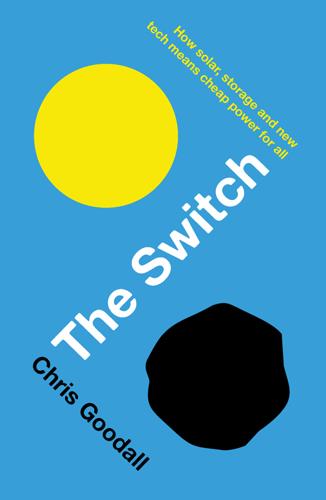
The Switch: How Solar, Storage and New Tech Means Cheap Power for All
by
Chris Goodall
Published 6 Jul 2016
As importantly, and this is not something extensively discussed by Smil, we will need no new physical infrastructure in the form of tanks, storage caverns and pipes for storing and moving these zero carbon fuels. Smil makes the correct assertion that energy transitions normally need new networks, meaning such things as pipelines and electric grids. One of the most positive aspects of THE SWITCH is that the cost of this will be tiny in the case of the move to PV. It will be the first energy transition that has ever occurred that does not require a new distribution network. Equally important, for poorer countries with weak or nonexistent electricity grids there will be no need to build a large infrastructure for electricity distribution.
…
Combined with eight times as much PV, this would, over the full year, have given the country about twice as much power as it needs. This may be the right thing to do, but covering the winter months by hugely investing in wind will approximately double the cost to Germany of the remainder of its energy transition. What might we do instead to provide stored power? The four main storage options The best way of providing storage of months’ worth of energy is either to use plants and trees as the source of seasonal storage or to convert electricity into hydrogen in periods of substantial surplus, possibly then using the gas to make storable fuels, either methane or liquids.

Road to Nowhere: What Silicon Valley Gets Wrong About the Future of Transportation
by
Paris Marx
Published 4 Jul 2022
Kirsch, The Electric Vehicle and the Burden of History, Rutgers University Press, 2000, p. 30. 2 Ibid., p. 63. 3 Kirsch, The Electric Vehicle and the Burden of History, p. 6. 4 Annie Kelly, “Apple and Google Named in US Lawsuit over Congolese Child Cobalt Mining Deaths,” Guardian, December 16, 2019, Theguardian.com. 5 Elsa Dominish, Sven Teske, and Nick Florin, Responsible Minerals Sourcing for Renewable Energy, report prepared for Earthworks by the Institute for Sustainable Futures, University of Technology Sydney, 2019, Earthworks.org. 6 Siddharth Kara, “I Saw the Unbearable Grief Inflicted on Families by Cobalt Mining. I Pray for Change,” Guardian, December 16, 2019, Theguardian.com. 7 Kirsten Hund et al., “Minerals for Climate Action: The Mineral Intensity of the Clean Energy Transition,” The World Bank, 2020, Worldbank.org. 8 “Turning Down The Heat: Can We Mine Our Way out of the Climate Crisis?,” Mining Watch Canada, November 2020, Miningwatch.ca. 9 “The Role of Critical Minerals in Clean Energy Transitions,” International Energy Agency, May 2021, Iea.org. 10 Ibid. 11 Dominish, Teske, and Florin, “Responsible Minerals Sourcing for Renewable Energy.” 12 “Mineral Commodity Summaries 2021,” U.S.
…
For example, 70 percent of the mines controlled by the six largest mining companies are in regions without sufficient water.7 While electric vehicles are not the only reason that resource demand is increasing, MiningWatch Canada estimated that without significant changes in how we organize transportation networks, “battery storage for electric vehicles is currently projected to be the main driver of additional metals and materials needed for the energy transition.”8 To that point, the International Energy Agency reported in 2020 that meeting the goals of the Paris Agreement to keep warming well below 2ºC will cause total mineral demand to quadruple by 2040, but the distribution of that demand is not uniform across different technologies. Electric vehicles are estimated to account for a significant majority of the increased demand, but most of it—about 80 percent—will be for passenger and light commercial vehicles.9 While the increased mineral intensity does not mean that electric vehicles generate more emissions than conventional vehicles, the significant proportion of demand coming from passenger vehicles illustrates why we cannot just replace everything that was once powered by fossil fuels with equivalent products powered by batteries.
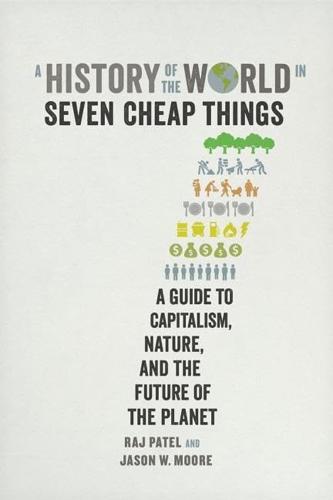
A History of the World in Seven Cheap Things: A Guide to Capitalism, Nature, and the Future of the Planet
by
Raj Patel
and
Jason W. Moore
Published 16 Oct 2017
“Economic Structure and Agricultural Productivity in Europe, 1300–1800.” European Review of Economic History 4, no. 1: 1–25. ———. 2009. The British Industrial Revolution in Global Perspective. Cambridge: Cambridge University Press. ———. 2013. “Anthropocenic Poetics: Ethics and Aesthetics in a New Geological Age.” In “Energy Transitions in History: Global Cases of Continuity and Change,” edited by Richard W. Unger. Special issue of Rachel Carson Center Perspectives 2013, no. 2: 11–15. Altieri, Miguel. 1999. “Applying Agroecology to Enhance the Productivity of Peasant Farming Systems in Latin America.” Environment, Development and Sustainability 1: 197–217.
…
“Meat’s Large Water Footprint: Why Raising Livestock and Poultry for Meat Is So Resource-Intensive.” Food Tank, December 16. http://foodtank.com/news/2013/12/why-meat-eats-resources. Oram, Richard. 2013. “Arrested Development? Energy Crises, Fuel Supplies, and the Slow March to Modernity in Scotland, 1450–1850.” In Energy Transitions in History: Global Cases of Continuity and Change, edited by Richard W. Unger, 17–24. Munich: Rachel Carson Centre. Ormrod, David. 2003. The Rise of Commercial Empires: England and the Netherlands in the Age of Mercantilism, 1650–1770. Cambridge: Cambridge University Press. Orren, Karen. 1991.
…
The Whiskey Rebellion: Frontier Epilogue to the American Revolution. Oxford: Oxford University Press. Slicher van Bath, Bernard Hendrik, and O. Ordish. 1963. The Agrarian History of Western Europe, A.D. 500–1850. London: Arnold. Smil, Vaclav. 1999. “Detonator of the Population Explosion.” Nature 400, no. 6743: 415. ———. 2010. Energy Transitions: History, Requirements, Prospects. Santa Barbara, CA: Praeger. Smith, Adam. (1759) 1976. The Theory of Moral Sentiments. Oxford: Clarendon. Smith, Daniel Scott. 1993. “The Curious History of Theorizing about the History of the Western Nuclear Family.” Social Science History 17, no. 3: 325–53.

Unsustainable Inequalities: Social Justice and the Environment
by
Lucas Chancel
Published 15 Jan 2020
Energy experts and environmentalists praised the political genius of the government and looked forward to the steady increases contemplated by the schedule of tax rates in the years ahead. Few expected the social unrest that was about to come.19 Because the planned rise in carbon tax revenues had not been accompanied either by additional compensatory mechanisms to offset the burden on low- and middle-income households or by a significant increase in energy transition investments, however, millions of households had no low-carbon transport or heating alternatives. In the absence of any meaningful financial assistance, rising carbon tax rates were bound to trigger popular discontent. This is what finally happened in 2018, when the new center-right government of Emmanuel Macron ratcheted up the carbon tax as part of a broader plan to scrap the wealth tax and reduce tax rates on capital incomes.
…
The French example might usefully serve as a case study of how not to reform taxation in the twenty-first century. If governments do not develop comprehensive programs that will help working-class households adapt to new tax and regulatory environments and ensure that all social groups contribute their fair share to energy transition efforts, environmental policies are likely to be opposed, sometimes by violent means. The reality is that there are other courses of action available to us. In Indonesia, as we have seen, an adroit combination of energy price increases and investments in social security made it possible to secure public support for the measure—the opposite of what happened in France in 2018.
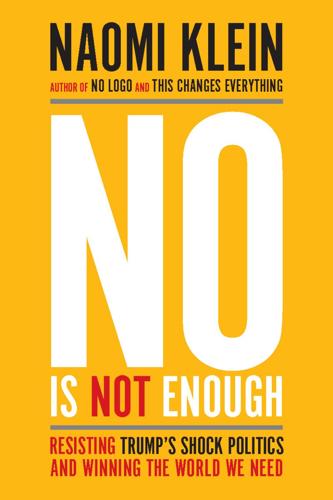
No Is Not Enough: Resisting Trump’s Shock Politics and Winning the World We Need
by
Naomi Klein
Published 12 Jun 2017
We were inspired by these models—and by the hundreds of thousands of jobs they have created—but we were equally inspired by examples in the United States, where, through networks like the Climate Justice Alliance, low-income communities of color have been fighting to make sure the places that have been most polluted and neglected benefit first from a large-scale green energy transition. In Canada, the same patterns are clear: our collective reliance on dirty energy over the past couple of hundred years has taken its highest toll on the poorest and most vulnerable people, overwhelmingly Indigenous and immigrant. That’s whose lands have been stolen and poisoned by mining. That’s who gets the most polluting refineries and power plants in their neighborhoods. So in addition to calling for “energy democracy” on the German model, we placed reparative justice at the center of the energy transition, calling for Indigenous and other front-line communities (such as immigrant neighborhoods where coal plants have fouled the air) to be first in line to receive public funds to own and control their own green energy projects—with the jobs, profits, and skills staying in those communities.
…
Over the past decade, the German government has treated the green economy as the main way to revive its manufacturing sector. In the process, it has created 400,000 jobs, and now 30 percent of the country’s energy comes from renewables. And Germany has the strongest economy in Europe by far. The energy transition there is incomplete—Germany remains excessively reliant on coal—and its government has inflicted merciless austerity on other countries while choosing another course for itself. But if the US had followed Germany’s domestic example, it would have been so far along the road to a renewables-based economy that it would have been impossible for Trump to undo—no matter how many executive orders he signed.
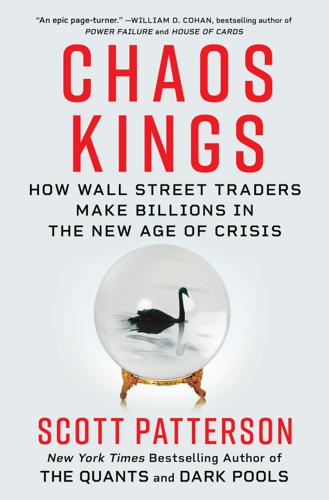
Chaos Kings: How Wall Street Traders Make Billions in the New Age of Crisis
by
Scott Patterson
Published 5 Jun 2023
Not to mention the fossil fuel−gulping corporations they ran. Read felt it was worth a shot, though. If just a tiny fraction of the world’s super-rich would join a “Billionaires Rebellion,” it could be game-changing. In a private meeting hosted by Lord Adair Turner, chairman of the forum’s Energy Transitions Commission, Read addressed some of the world’s leading industrialists, including a high-ranking executive at an oil major. Civilization, he said, faced the risk of collapse if immediate action wasn’t taken to sharply reduce carbon emissions. In the meantime, he said, the world needed to take adaptive measures to prepare for the destructive forces to come—the superstorms, the rising sea levels, the scorched crops.
…
Rather, they’re caused by “endogenous” events that take place inside the market, strategies reacting to strategies, cascades causing cascades—earthquakes triggering earthquakes. Similar phenomena could be found in book sales, species extinctions, social unrest, and more. He wrapped up his speech with a nod toward a looming problem he said gave him the greatest concern in the world today—the clean-energy transition away from fossil fuels. Sornette said he believed much of the talk behind efforts to decarbonize the global economy was an “aspirational infantile fantasy” that didn’t take into account the fact that the project was an energy replacement, rather than an addition of new energy sources. It was a monumental effort on a scale of World War II, taking place at a time when vast regions of the world were clamoring for more energy.
…
The paper went viral https://www.vice.com/en/article/vbwpdb/the-climate-change-paper-so-depressing-its-sending-people-to-therapy. Vice magazine called it https://www.bbc.com/news/stories-51857722. “These are profound economic shifts” https://www.wsj.com/articles/green-finance-goes-mainstream-lining-up-trillions-behind-global-energy-transition-11621656039. A 2022 study by a group of Oxford scientists https://www.cell.com/joule/fulltext/S2542-4351(22)00410-X. A harbinger of the shift https://www.blackrock.com/us/individual/larry-fink-ceo-letter. “All the cool kids are doing carbon capture” Jinjoo Lee, “Exxon’s Well-Timed Hop onto Carbon-Capture Bandwagon,” Wall Street Journal, February 8, 2021, https://www.wsj.com/articles/exxons-well-timed-hop-onto-carbon-capture-bandwagon-11612785602.
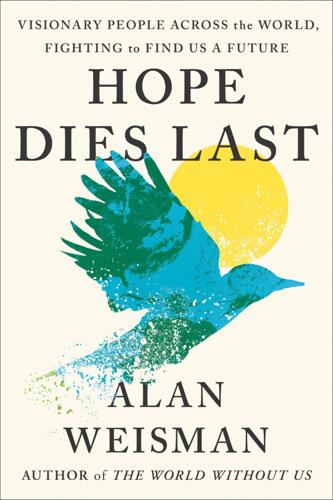
Hope Dies Last: Visionary People Across the World, Fighting to Find Us a Future
by
Alan Weisman
Published 21 Apr 2025
He smirks. “They don’t like it if they don’t have an answer.” Everyone knew why they didn’t. “It’s difficult for us working here to understand how the same ministry that tries to protect us against floods isn’t eager to ban fossil fuels. Simply, the first is a technical issue, while an energy transition is a political issue.” He sighs deeply. “There are extremely capable water engineers in this building. I think we could cope with one-meter rise per century. But it’s not so much the amount of sea level rise, it’s the speed. That will be hardest to handle, and it will continue. In the end, a lot of people will have to move.
…
Six months of tests with American Airlines pilots using Google’s AI-based predictions to avoid humid atmospheric layers reduced contrails by 54 percent. “We just figure out if the plane should go right, left, or down a bit. I don’t know if that’s a scratch or a dent in the problem, but it reduces global warming by 1 percent without waiting for the energy transition.” One percent down, 99 to go. * * * — When John accepted Google’s offer, among his conditions was staying in Seattle for his family, but he frequently meets with team members at the Googleplex in Mountainview, California. On his way to grab dinner at Root Cafe, one of the many free restaurants for Google employees, the sand volleyball courts he hurries past on a hazy January night are full of barefoot software engineers, playing under cones of light.
…
The relatively short time it took the beam to turn a rock into a doughnut also demonstrated it could reach depths of 20 kilometers in only a couple of months. Unlike fusion, which requires specialized operators, says Woskov’s former student Carlos Araque, CEO of Quaise Energy, another MIT spinoff that’s begun boring test holes, petroleum roughnecks will need minimal training to man this new technology. “Drilling is drilling. The energy transition needs to happen so fast, you almost have to bet on an existing workforce. We can’t afford waiting a generation to build one.” To that point, Dennis Whyte agrees. “Remember, we need to replace 82 percent of all human energy use. There are only two inexhaustible energy sources on Earth: fusion and the energy of Earth itself.”

The Future of Fusion Energy
by
Jason Parisi
and
Justin Ball
Published 18 Dec 2018
5.Fusion Technology 5.1Magnets 5.2Plasma Heating and Current Drive 5.2.1Inductive 5.2.2Neutral beam 5.2.3Electromagnetic wave 5.3First Wall 5.4Divertors 5.5Tritium Breeding Blanket 5.6Vacuum Vessel 5.7Diagnostics 5.8Radioactive Waste and Remote Maintenance 5.9Generating Net Electricity PART 3THE STATE OF THE ART 6.The Past: Fusion Breakthroughs 6.11920s: Understanding Stars 6.21950s: A Kick-Start for Fusion 6.31960s: Superconducting Magnets 6.41960s: The Tokamak 6.51970s: Bootstrap Current 6.61980s: H-Mode 6.71980s: Plasma Shaping 6.81990s: Deuterium–Tritium Fuel 6.92000s: Supercomputers 7.The Present: ITER 7.1ITER’s Goals 7.2ITER’s Strategy 7.2.1Heating systems 7.2.2Divertor 7.2.3First wall 7.3ITER’s Schedule and Cost 7.4Transition to DEMO 7.5Other Things to be Excited for 8.The Future: Designing a Tokamak Power Plant 8.1Power Plant Design from First Principles 8.2Maximizing Net Electric Power 8.3Maximizing Plasma Pressure 8.4Maximizing Plasma Current 8.5Maximizing Magnetic Field Strength 8.6Minimizing External Power 8.7Minimizing Heating Power 8.8Maximizing Plasma Density 8.9Minimizing Current Drive Power 8.10Maximizing Material Survivability 8.11Striking the Right Balance PART 4SPECIAL TOPICS 9.Alternative Approaches to Fusion Energy 9.1Stellarators 9.2Inertial Confinement Fusion 9.3Private Fusion Startups 9.3.1Tokamak Energy Ltd 9.3.2General Fusion 9.3.3Lockheed Martin 9.3.4TAE Technologies 9.3.5Lawrenceville Plasma Physics 9.3.6Helion Energy 9.3.7Commonwealth Fusion Systems 10.Fusion and Nuclear Proliferation 10.1Nuclear Physics: A Double-edged Sword 10.2Building Nukes 10.2.1Uranium enrichment 10.2.2Plutonium production 10.2.3Weapon designs 10.3Conventional Fission Reactors 10.4Breeder Reactors 10.5Fission Proliferation Risks 10.6Fusion Proliferation Risks 10.7The Nuclear Energy Transition 10.8Reshaping Geopolitics 10.9Being a Role Model 11.Fusion and Space Exploration 11.1Basics of Spaceflight 11.2Fusion Thruster PART 5CONCLUSIONS 12.When Will We Have Fusion? Bibliography Index Introduction: The Case for Fusion Fusion powers the universe. Every one of the stars in the sky uses fusion to generate enormous amounts of energy.
…
It’s only necessary for the widespread adoption of fusion power in a world without nuclear weapons. In a world with nuclear weapons, why would bomb-makers bother with a fusion power plant? Countries will still have dedicated uranium enrichment and plutonium production facilities and there will still be fissile material to steal. 10.7The Nuclear Energy Transition After fusion power plants become available, it seems likely that there will be a period in which both fission and fusion power coexist. We will transition from an era of pure fission, through an era of fission and fusion, to an era of pure fusion. As fusion power plants are built and fission plants are phased out, there will be a period of time when both fissile material and tritium will be abundant in the world (see Figure 10.17).
…
Index A agriculturalists energy sources, 4 air conditioners, 12 Al-Qaeda, 308 Alcator C-Mod, 231, 280, 301, 361 Alpha Centauri, 348 aneutronic see p-B, 292 ARC, 248 Argentina see Ronald, 179 Arkhipov, Vasili, 305 arsenals by country nuclear weapons, 304 ASDEX-U, 129, 193, 277 Aston, Francis, 177 atmospheric pollution, 238 B B-59 submarine, 305 bald spot, 103 banana orbits see super-bananas, 118, 190 baseload sources, 46 bell curve, 39, 83 Bell Telephone Laboratory, 184 Beria, Lavrenti, 189 beryllium, 162, 224, 324 Bethe, Hans, 178 Big Bang, 12 binding energy, 70–71 biomass, 35 Boeing 747 airplane, 353 Boltzmann constant, 69 bootstrap current, 189 bootstrap multiplication see bootstrap current, 254 brains, 59 bravery, 59, 335 brawn, 59 breakeven, 135 Breakthrough Starshot, 353 breeder reactors, 26, 330 fuelling proliferation, 333 bremsstrahlung see p-B, 293 burning plasma see ignition, breakeven, triple product, Lawson criteria, 136, 214 C C-2U, 278 Californium, 316 CANDU reactors, 327 capital cost, 240 carbon capture and storage, 39 Carnot limit, 31 catalyzed D–D fuel cycle, 85, 355 central solenoid, 145, 283 chain reaction, 314 chemical propulsion, 352 Chernobyl, 24 Chicago Pile-1, 311 classical transport, 123 climate change, 238–239 CNO cycle see stars, Bethe, Hans, 178 cold fusion, 77 Commonwealth Fusion Systems, 301 confinement, 82 electrostatic, 112 empirical scaling laws, 251 energy confinement time, 90 toroidal magnetic, 109 volume to surface area ratio argument, 256 conservation of momentum, 349 frozen lake argument, 350 convective eddies, 32 conventional spacecraft, 350 Coriolis force, 32 cost of electricity, 239 critical mass, 315 cross-section, 77–78 Cuban Missile Crisis, 304 current drive, 144 electron cyclotron, 152 electromagnetic wave, 150 inductive, 145 neutral beam, 148 cusp geometry see Lockheed Martin, 288 D D–3He fusion, 85, 300, 354 D–D fusion, 20, 85, 202, 301, 354 D–T fusion, 20, 83, 161, 202, 269, 281, 287, 292, 337 Darwin, Charles, 175 Debye length, 99 dense plasma focus see Lawrenceville plasma physics, 297 deuterium abundance on Earth, 22 diagnostics, 164–165 diffusion see random walk diffusion, 123 DIII-D, 277 direct drive see indirect drive, inertial confinement fusion, 272 dirty bombs, 321 dispatchable sources, 46 disruptions, 153–154, 222, 244, 267 mitigating, 155 divertor, 157, 194, 220, 256 double-edged sword nuclear energy as blueprint, 345 nuclear physics, 310 technologies, 311 E early hominids, 3 Earth–Moon system, 16, 41 Eddington, Arthur, 178 edge localized modes see ELMs, 194 Edison, Thomas, 6 electric field, 94, 150 electromagnetic force, 74 electromagnetic induction, 5, 12 electromagnetic repulsion, 67 electromagnetic waves, 269 electromagnetism, 90 electromagnets, 93 electrons, 65 in light bulbs, 6 electrostatic, 95 ELMs, 194, 222 ELMO bumpy torus, 114 empirical scaling law, 130, 251 enrichment, 333 energy conservation of, 11 flows of, 13 energy hierarchy, 58 energy storage, 50 Enola Gay, 305 entropy, 11 EPED, 197 exhaust velocity, 350 expanding electrical grids, 54 external power, 249 F Faraday, Michael, 5 Fat Man, 305 fissiled percent, 322 fertile material, 330 field-reversed configuration, 290 first wall, 153, 222 fission proliferation, 333 fission reactors, 325 climate versus nuclear security tradeoff, 335 fission–fusion hybrids, 332 flow, 197, 245 Fokker–Planck simulations see gyrokinetics, 209 formation of fossil fuels, 37 Forrest, Michael, 188–189 fossil fuels, 37 Fukushima, 24 fusion, 13, 16, 19 enrichment in fusion blanket, 337 proliferation, 336 fusion fuels, 83 fusion power density, 243 fusion reactor design, 237 disabling a proliferator, 338 small fusion system, 339 smallest planned, 159 timescale for blanket proliferation ramp-up, 340 fusion thruster, 354 G gas centrifuges, 318 gaseous diffusion, 317 General Atomics, 198, 279 General Fusion, 284 geopolitics, 343 geothermal, 16, 27 global zero, 343 gravitational confinement, 89 gravity, 13, 89 gravity-assist, 351 Greenwald limit, 251 gun-type bomb, 323 gyrokinetic simulations, 252 gyrokinetics, 206, 252 scale separation, 207 gyroradius, 92 H H-mode, 130, 193, 206, 252 hairy ball theorem, 103 Halite-Centurion, 274 half-life, 20 Harwell, 187 heat death of the Universe, 12 heat flux, 221 heating, 14, 218 electron cyclotron, 152 ion cyclotron, 152 heavy element synthesis, 15 heavy elements, 16 heavy water reactors, 327 Heisenberg’s Uncertainty Principle, 79 Helion Energy, 300 heliotron, 114 helium-3 abundance, 354 hex, 317 Hiroshima, 322, 336 hohlraum see inertial confinement fusion, 272 hydroelectric, 39 hydrogen bomb, 89, 304, 324 hydropower, 17 I IAEA, 334, 339 ignition, 131, 250, 269 MCF and ICF ignition differences, 274 implosion bomb, 323 inboard see torus terminology, 110 indirect drive see direct drive, inertial confinement fusion, 272 inductive heating, 147 Industrial Revolution, 4 inertial confinement fusion, 269 weaponization propspects, 271 intercontinental ballistic missiles see ICBM, 309 intercontinental electrical grids, 55 Intergovernmental Panel on Climate Change, 9 internal transport barriers see pedestal, 196 intermittency, 30, 46 INTOR, 225 IPA, 278 Iron Curtain, 181 isotopes, 20, 73 isotope effect, 204 isotopic semantics, 73 ITER, 137, 203, 211, 237, 248, 257, 273, 302, 353, 361 ignition, 214 Q, 213 strategy, 216 Ivy Mike, 304 J JET, 140, 155, 169, 198, 200, 260, 273, 277 jet engine, 349 JT-60, 260 JT-60SA, 140, 169, 361 JT-60U, 140, 277, 361 Juno spacecraft, 347 K K-DEMO, 361 Kelvin, Lord, 177 Khrushchev, Nikita, 187 kink limit, 246 Kremlin, 186 Kurchatov, Igor, 188 Kurchatov Institute, 185 L L-mode, 193, 252 Lamb, Horace, 127 Landau energy levels, 298 Landau damping, 151 Landau, Lev, 151 Langmuir, Irving, 165 Langmuir probes, 165 laser enrichment, 320 lattice structure, 156 Lavrentyev, Oleg, 186 Lawrenceville Plasma Physics, 296 Lawson criterion see triple product, 131, 324 Lawson, John, 131 levitated dipole, 114 limiter see divertor, 157, 194 linear magnetic, 100 lithium, 21, 242 lithium pebbles, 163 lithium-6, 84, 161 lithium-7, 161 lithium-ion batteries, 22, 51 Little Boy fissiled percent, 322 Lockheed Martin, 287 Lufthansa Flight 181, 199 M magnet(s), 139 permanent, 93 magnetic confinement fusion, 247 magnetic field, 91, 150, 247 magnetic islands, 117, 265 magnetic mirror, 100, 355 magnetic surfaces, 114, 144, 158, 191, 265 open versus closed, 158 magnetized target fusion see MTF, 284 magnetohydrodynamics see MHD, 121 Manhattan Project, 318 Mars, 347 mass–energy equivalence, 77 material survivability, 255 matter–antimatter annihilation, 352 mechanical stress, 142, 283 Mercury, 181 Mercury laser see NIF, 276 messy engineering endeavor, 259 MHD, 209, 246 MHD stability, 153 mini-golf, 68 Mini-Sphere, 278 MIT, 301 Model C stellarator, 189 moderator, 326 Moore’s Law see triple product, 136, 205 MRI machines, 140 MTF, 284, 300 Munich, 199 N Nagasaki, 305, 322 neoclassical transport, 126, 265 net electric power, 241–242 net electricity, 169 neutral beam, 220 negative ion acceleration, 220 neutral beams, 291 efficiency, 149 neutron capture cross-section, 331 neutron flux, 156 neutron multiplication, 224 neutron multiplication factor, 162 neutron multipliers, 162 neutron shielding, 292 New York Times, 180 NIF, 273, 336 niobium–titanium, 184 niobium–tin, 184, 248 Nixon, Richard, 224 Nobel Peace Prize, 186 Nobel Prize, 183 non-inductive see current drive; neutral beam, 149 non-renewable, 19 North Korea, 339 nucleons, 65 nuclear energy transition, 341 nuclear fission, 16, 23 nuclear proliferation, 238, 359 nuclear potential, 66 nuclear security, 336 nuclear weapon, 303 boosted implosion bomb, 323 defenses, 309 gun-type bomb, 322 hydrogen bomb, 323 implosion bomb, 322 inspectors, 340 neutron initiator, 324 proliferation with increased tritium availability, 342 significant quantity, 334 tamper, 322 Teller–Ulam design, 325 weapon designs, 321 yield, 303 nuclear winter, 308 O ocean waves, 44 Onnes, Heike, 181 outboard see torus terminology, 110 Oxford, 199 P p-B fusion, 290 particle drifts, 104 E × B drift, 106, 128 B drift, 106, 194 curvature drift, 106 Pauli exclusion principle, 183 pedestal, 193 Pelamis, 46 Perhapsatron, 114, 181, 285 photosynthesis, 35 plasma, 86 plasma current, 114, 264 maximization, 246 plasma flow, 197, 245 plasma gain, 169 plasma heating, 144 plasma power engineering multiplication factor, 170 plasma power multiplication factor, 135 plasma pressure, 244 plasma shaping, 198 Pluto, 321, 347 plutonium, 90 plutonium-239, 25 production, 320 reactor-grade, 329 weapons-grade, 321 poloidal field coils, 144 poloidal see torus terminology, 110 polonium-210, 162 power multiplication, 170 Princeton, 189, 198 Princeton University, 180 profits, 238 proliferation, 333 propellant, 349 proton–proton chain see CNO cycle, stars, Bethe, Hans, 179 proton–proton fusion, 28 public relations, 359 pure fission weapons, 325 Q quasineutrality, 97–98, 150 R radioactive waste, 167 random walk diffusion, 123 rate of energy consumption, 18 Rayleigh–Taylor instability, 271, 285 remote maintenance system, 204 renewable, 19, 57 resistivity, 141 Richter, Ronald, 179, 187 right-hand rule, 93 robotic maintenance, 169, 257 rocket equation, 351 role model effect of fusion technology, 344 S safety factor, 115 Sakharov, Andrei, 186 Saturn, 347 scattering collision, 67 scientific notation, 26 seasonal energy storage, 52 Seebeck effect, 6 seeds, 35 shaping, 198 D-shape, 198 shattered pellet injection see disruptions, 156 significant quantity, 340 solar, 16, 28 Solar System, 17, 348 energy flows, 15 space capsules see divertor, 160 space colonization, 349 SPARC, 301 spent fuel current world production, 334 spherical tokamaks, 281 spheromak, 114, 287 Spitzer, Lyman, 113, 180, 263 ST40, 278 Stalin, Joseph, 187 stars, 175 possible fusion reactions, 178 red giant phase, 15 steam engine, 4 steam turbine, 6 stellarator(s), 114, 263 ignited, 267 stochastic regions, 117, 265 strong nuclear force, 66 Sun, 347 lifetime of, 176 super-bananas see banana orbits, 118 super-duper H-mode, 259 supercomputers, 204 superconductivity, 141, 181, 248 Cooper pairs, 183 type I, 184 type II, 184 superconductor, 283 high-temperature, 185, 283, 301 REBCO, 186 materials, 182 problem with neutrons, 163 supernovae, 14–15 surface-to-air missiles, 309 Sword of Damocles, 306 Symmetric Tokamak, 189 T T-1, 188 T-3, 113, 189, 263, 278 T-7, 185 T4, 278 TAE Technologies, 280, 290 Tamm, Igor, 186 TCV, 201, 280 technetium, 24 temperature, 83 TFTR, 203, 277 tritium detection, 339 thermal equilibrium, 82 thermodynamic efficiency, 31 thermonuclear bomb see nuclear weapons — hydrogen bomb, 324 thermotron, 180 Thor, 110 Thomson scattering, 166 thorium, 321 Three Mile Island, 24 tidal, 16, 41 TNT, 304 toast making of, 7 tokamak, 113 Tokamak Energy Ltd., 281 Tore Supra, 141 toroidal torus terminology, 110 toroidal field, 140 toroidal field coils, 198 toroidal symmetry, 264 torsatron, 114 torus, 104 torus terminology, 110 trapped particles, 118 TRIAM-1M, 185 Trinity, 303, 344 triple product, 135, 267 tritium, 20, 161, 338 cost, 202 current reserves, 341 detecting use in fusion reactor, 339 increased availability proliferation risk, 342 tritium breeding, 215 tritium breeding blanket, 160, 247 Troyon limit, 243, 282 game of chicken, 244 violation, 245 Tsar Bomba, 304 Tuck, James, 181 tungsten, 224 turbulence, 206, 255 turbulent eddy, 128, 197 turbulent transport, 126 U U.S.S.

What If We Get It Right?: Visions of Climate Futures
by
Ayana Elizabeth Johnson
Published 17 Sep 2024
– Trade associations for fossil-fuel-related companies spend hundreds of millions of dollars a year to obstruct climate policy via advertisements, lobbying, and political donations. 10 Possibilities + Every $1 invested in resilient infrastructure can yield $4 in benefits. + Getting to net zero is a more than $12 trillion business opportunity. In 2023, $1.8 trillion was invested in the clean energy transition, a new record. + Due to the favorable economics of renewables, decarbonizing the energy system by 2050 could save up to $15 trillion. + In 2023, for the second year in a row, banks generated more revenue from environmentally friendly investing (about $3 billion) than from fossil fuel investing ($2.7 billion)
…
Instead, polluters should fully bear the costs of these “externalities,” and governments should ensure that our laws to protect clean air and water and protect us from toxins are much better enforced. If need be, take them to court. Use both carrots and sticks—incentives and loans, plus taxes and fines. Tax incentives, grants, and federal loans will supercharge an energy transition. The funding in the Inflation Reduction Act was a great start. In the state of Georgia, billion-dollar investments in green industries have led to so much job creation that Republicans and Democrats are fighting over who should get the credit. Carrots are important. But so are sticks to prod companies to do the right thing.
…
I want New York City to be beautiful, green, colorful, and not noisy. Ayisha: What I would imagine New York City to look like, because I live in a community that is a result of historic redlining and segregation, is that Black and Brown kids way out in Brooklyn have access to the same nutritional food as those who live in the middle of the city. I imagine an energy transition. Twenty or thirty years from now, New York City is a place that is livable and sustainable. Our metropolitan and transit systems are much more efficient. The city is home to so much diversity and culture, but also money. Money is constantly prioritized. And if you don’t make enough to be able to live in the city, you’re pushed out.

The Collapse of Western Civilization: A View From the Future
by
Naomi Oreskes
and
Erik M. Conway
Published 30 Jun 2014
A shadow of It is clear that in the early ignorance and denial had fallen twenty-first century, imme- over people who considered diate steps should have been themselves children of the taken to begin a transition enlightenment. to a zero-net-carbon world. Staggeringly, the opposite occurred. At the very time that the urgent need for an energy transition became palpable, world production of greenhouse gases increased. This fact is so hard to understand that it calls for a closer look at what we know about this crucial juncture. Bangladesh Among North Americans, Bangladesh—one of the poorest nations of the world—served as an ideological battleground.
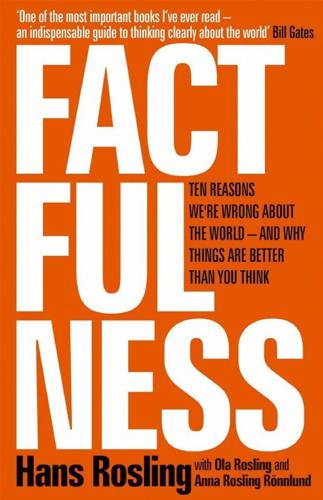
Factfulness: Ten Reasons We're Wrong About the World – and Why Things Are Better Than You Think
by
Hans Rosling
,
Ola Rosling
and
Anna Rosling Rönnlund
Published 2 Apr 2018
The world population in 1918 was 1.84 billion, which means this pandemic wiped out 2.7 percent of the entire global population. TB and swine flu. The data on swine flu comes from WHO[17], and the data for TB from WHO[10,11]. See gapm.io/bswin. Energy sources. The data comparing energy sources is from Smil, Energy Transitions: Global and National Perspectives (2016). Smil describes the slow transition away from fossil fuels and also debunks myths about food production, innovation, population, and mega-risks. See gapm.io/tene. Future consumers. For an interactive visualization of the graphs on page 138, see gapm.io/incm.
…
“Study on the Concept of Per Capita Cumulative Emissions and Allocation Options.” Advances in Climate Change Research 2, no. 2 (June 25, 2011): 79–85. gapm.io/xcli11. SIPRI Trends in world nuclear forces, 2017. Kile, Shannon N. and Hans M. Kristensen. SIPRI, July 2017. gapm.io/xsipri17. Smil, Vaclav. Energy Transitions: Global and National Perspectives. 2nd ed. Santa Barbara, CA: Praeger, 2016. gapm.io/xsmilen. . Global Catastrophes and Trends: The Next Fifty Years. Cambridge: MIT Press, 2008. gapm.io/xsmilcat. Spotify. Web API. https://developer.spotify.com/web-api. Stockholm Declaration. Fifth Global Meeting of the International Dialogue on Peacebuilding and Statebuilding, 2015. https://www.pbsbdialogue.org/en.

The Capitalist Manifesto
by
Johan Norberg
Published 14 Jun 2023
In 2019, Germany’s Auditors General stated that the change had cost €160 billion in the last five years alone and that the expenditure is ‘in extreme disproportion to the results’.18 Attempts to transform everything from the top created instability and uncertainty in the entire electricity system, and the decommissioning of nuclear power meant that perversely Germany had to use more coal power. The result of the massive government push was that Germany reduced CO2 emissions less than other European countries and it cost them more – in taxes and in the highest electricity prices in the EU. When I asked the energy expert Dieter Helm about the German energy transition’s three goals of reducing emissions, and increasing competitiveness and safety, he replied briefly: ‘to fail on one is something the politicians should answer for. But to fail on all three, that’s a pretty big achievement.’19 More Vasa than NASA Failures are admittedly part of all innovation processes, including private ones.
…
When China and other emerging economies did the same a century later, they only emitted 500 grams for every dollar at the dirtiest point. The present generation of fast-growing economies in Africa and south Asia have already peaked at 300 grams per dollar produced and are moving towards a greener energy transition.36 But the fact that we emit less per person and per unit of wealth produced is unfortunately not enough, for the simple reason that tomorrow there will be even more of us on this planet and we will produce more units of wealth. Energy use therefore increased by 59 per cent during the same period and CO2 emissions by approximately 38 per cent.

Chokepoints: American Power in the Age of Economic Warfare
by
Edward Fishman
Published 25 Feb 2025
Singh’s task would be to spearhead the foreign policy elements of Biden’s broader economic program. Beyond tackling the damage wrought by the pandemic, that program envisioned a paradigm shift: abandoning decades of neoliberal dogma and welcoming more forceful government intervention in pursuit of the national interest, be it supporting American workers, fueling the clean-energy transition, or outcompeting China. The new administration’s ambitions in economic warfare were modest by comparison, despite a collection of high-level officials with deep experience in the field. Sullivan and his deputy, Jon Finer, were veterans of the campaign that led to the Iran nuclear deal. So were Wendy Sherman, now the number two at the State Department, CIA Director Bill Burns, and Burns’s deputy, David Cohen.
…
The most important of these is clean-energy technology, an industry that relies on a supply chain of critical minerals that China dominates. China produces some two-thirds of the world’s supply of lithium and cobalt, both of which are essential for building electric cars. It is a massive producer of other ingredients for the clean-energy transition, such as aluminum, graphite, and nickel, and it controls nearly all the world’s supply of some rarer and lesser-known critical minerals, such as gallium. The most vivid demonstration of China’s proficiency in clean-energy technology is the meteoric rise of its auto sector. Largely on the back of electric vehicles, China became the world’s top car exporter in 2023, with sales growing at an astonishing clip of more than 50 percent year-over-year.
…
GO TO NOTE REFERENCE IN TEXT untold sums striving to catch up: China’s previous enormous investments in the chip sector were tainted by fraud and largely went to waste. See Edward White and Qianer Liu, “China’s Big Fund Corruption Probe Casts Shadow over Chip Sector,” Financial Times, September 28, 2022, www.ft.com/content/8358e81b-f4e7-4bad-bc08-19a77035e1b4. GO TO NOTE REFERENCE IN TEXT ingredients for the clean-energy transition: Jon Emont, “China Controls Minerals That Run the World—and It Just Fired a Warning Shot at U.S.,” The Wall Street Journal, July 7, 2023, www.wsj.com/articles/china-controls-minerals-that-run-the-worldand-just-fired-a-warning-shot-at-u-s-5961d77b; Jackie Northam, “China Dominates the EV Battery Industry.

MegaThreats: Ten Dangerous Trends That Imperil Our Future, and How to Survive Them
by
Nouriel Roubini
Published 17 Oct 2022
Lofty pledges promise to reduce emissions by 50 percent for the United States and 55 percent for Europe by 2030, but actual policies in rich countries cannot meet such ambitious goals. With advanced economies at peak GHG output, a brake on global warming will depend in part on a developing world that is out of step with environmental goals. “If energy transitions and clean energy investment do not quickly pick up speed in emerging and developing economies, the world will face a major fault line in efforts to address climate change and reach other sustainable development goals,” the International Energy Agency warned in a 2021 special report. “This is because the bulk of the growth in global emissions in the coming decades is set to come from emerging and developing economies as they grow, industrialise and urbanise.”28 In other words, it was okay for the United States and other rich countries to pass through a period of massive emissions, until they became wealthy enough to have the resources to start to curb them.
…
“A 30C World Has No Safe Place,” The Economist, July 24, 2021, https://www.economist.com/leaders/2021/07/24/a-3degc-world-has-no-safe-place. 27. “IPCC Assessment of Climate Change Science Finds Many Changes are Irreversible,” IISD/SDG Knowledge Hub, August 10, 2021, https://sdg.iisd.org/news/ipcc-assessment-of-climate-change-science-finds-many-changes-are-irreversible/. 28. “Financing Clean Energy Transitions in Emerging and Developing Economies,” International Energy Agency, World Energy Investment 2021 Special Report, https://iea.blob.core.windows.net/assets/6756ccd2-0772-4ffd-85e4-b73428ff9c72/FinancingCleanEnergyTransitionsinEMDEs_WorldEnergyInvestment2021SpecialReport.pdf. 29. Jeffrey Ball, Angela Ortega Pastor, David Liou, and Emily Dickey, “Hot Money: Illuminating the Financing of High Carbon Infrastructure in the Developing World,” iScience 24, no. 11 (November 19, 2021), https://www.sciencedirect.com/science/article/pii/S2589004221013274. 30.

Growth: From Microorganisms to Megacities
by
Vaclav Smil
Published 23 Sep 2019
Long II) Biomass Energies The Bad Earth Carbon Nitrogen Sulfur Energy Food Environment Energy in China’s Modernization General Energetics China’s Environmental Crisis Global Ecology Energy in World History Cycles of Life Energies Feeding the World Enriching the Earth The Earth’s Biosphere Energy at the Crossroads China’s Past, China’s Future Creating the 20th Century Transforming the 20th Century Energy: A Beginner’s Guide Oil: A Beginner’s Guide Energy in Nature and Society Global Catastrophes and Trends Why America Is Not a New Rome Energy Transitions Energy Myths and Realities Prime Movers of Globalization Japan’s Dietary Transition and Its Impacts (with K. Kobayashi) Harvesting the Biosphere Should We Eat Meat? Power Density Natural Gas Still the Iron Age Energy Transitions (new edition) Energy: A Beginner’s Guide (new edition) Energy and Civilization: A History Oil: A Beginner’s Guide (new edition) Growth From Microorganisms to Megacities Vaclav Smil The MIT Press Cambridge, Massachusetts London, England © 2019 Massachusetts Institute of Technology All rights reserved.
…
Besides, all of this misses the most obvious point of such curve-fitting exercises based on cumulative numbers of creative acts (compositions, novels, or paintings): those analyzed numbers are mere quantities devoid of any qualitative content and they do not reveal anything about the course of a creative process or about the appeal and attractiveness of individual creations. Marchetti has been also an enthusiastic user of logistic curves in forecasting technical developments in general and composition of global primary energy demand in particular. In his studies of energy transitions, he adopted a technique developed by Fisher and Pry (1971). Originally used to study the market penetration of new techniques, it assumes that the advances are essentially competitive substitutions which will proceed to completion (that is, to capturing most of the market or all of it) in such a way that the rate of fractional substitution is proportional to the remainder that is yet to be substituted.
…
Cambridge, MA: MIT Press. Smil, V. 2016a. Embodied energy: Mobile devices and cars. Spectrum IEEE (May):26. http://ieeexplore.ieee.org/stamp/stamp.jsp?arnumber=7459114. Smil, V. 2016b. Still the Iron Age. Oxford: Elsevier. Smil, V. 2017a. Energy and Civilization. Cambridge, MA: MIT Press. Smil, V. 2017b. Energy Transitions. Santa Barbara, CA: Praeger. Smil, V. 2017c. Oil: A Beginner’s Guide. London: Oneworld. Smil, V. 2017d. Transformers, the unsung technology. Spectrum IEEE (August):24. Smil, V. 2018a. February 1878: The first phonograph. Spectrum IEEE (February):24. Smil, V. 2018b. It’ll be harder than we thought to get the carbon out.
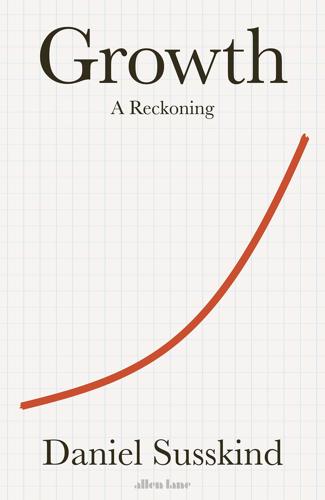
Growth: A Reckoning
by
Daniel Susskind
Published 16 Apr 2024
In a sense, the Russia-Ukraine war provided a glimpse of how that might work: Europe, heavily dependent on Russian fossil fuels, lurched towards renewables after Russia invaded and the price of oil and gas soared. In the words of the head of the International Energy Agency, the war was ‘an accelerator for clean energy transitions’. Companies like BP have said the same thing.26 Now, one substantial problem with a serious carbon tax is the politics. That is inescapable. But it is certainly no more politically difficult than other popular suggestions, and a walk in the proverbial park compared to the notion of dismantling ‘capitalism’ or the ‘market’ that many on the Left propose.
…
lang=en. 23 McKinsey & Co, updated in September 2022: www.mckinsey.com/industries/electric-power-and-natural-gas/our-insights/renewable-energy-development-in-a-net-zero-world. Thanks to twitter.com/AlecStapp/status/1586747712287875072/photo/1. 24 twitter.com/scienceisstrat1/status/1601650724852895744 25 ‘The Energy Transition Will Be Expensive’, The Economist, 5 October 2022: a 10 per cent increase in fuel prices, for instance, appears to increase a firm’s likelihood of investing in green technologies by 10 per cent. 26 Somini Sengupta, ‘The Shift to Renewable Energy Is Speeding Up. Here’s How’, The New York Times, 31 January 2023. 27 See Daniel Susskind, A World Without Work: Technology, Automation and How We Should Respond (London: Allen Lane, 2020), Chapter 1. 28 Many of these ideas are explored in the work of Daron Acemoglu, the flag bearer for this movement. 29 Susskind, A World Without Work, p. 175. 30 www.brookings.edu/wp-content/uploads/2020/12/Acemoglu-FINAL-WEB.pdf 31 Acemoglu and Johnson, Power and Progress.
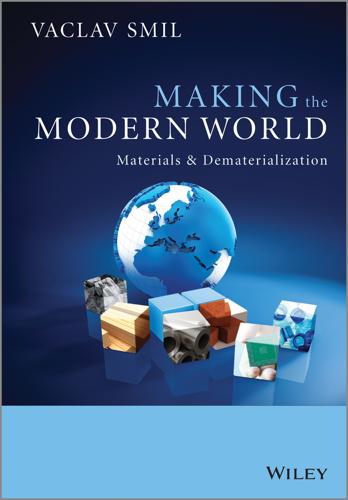
Making the Modern World: Materials and Dematerialization
by
Vaclav Smil
Published 16 Dec 2013
Long II) Biomass Energies The Bad Earth Carbon Nitrogen Sulfur Energy Food Environment Energy in China's Modernization General Energetics China's Environmental Crisis Global Ecology Energy in World History Cycles of Life Energies Feeding the World Enriching the Earth The Earth's Biosphere Energy at the Crossroads China's Past, China's Future Creating the 20th Century Transforming the 20th Century Energy: A Beginner's Guide Oil: A Beginner's Guide Energy in Nature and Society Global Catastrophes and Trends Why America Is Not a New Rome Energy Transitions Energy Myths and Realities Prime Movers of Globalization Japan's Dietary Transition and Its Impacts (with K. Kobayashi) Harvesting the Biosphere Should We Eat Meat? Preface: Why and How The story of humanity – evolution of our species; prehistoric shift from foraging to permanent agriculture; rise and fall of antique, medieval, and early modern civilizations; economic advances of the past two centuries; mechanization of agriculture; diversification and automation of industrial protection; enormous increases in energy consumption; diffusion of new communication and information networks; and impressive gains in quality of life – would not have been possible without an expanding and increasingly intricate and complex use of materials.
…
Studies show their effects ranging from negligible (less than 5% increase) to substantial, with more than a 50% rise in specific energy consumption – and there is even greater uncertainty about indirect rebound, that is, on spending the income freed by savings on products or services that are equally or even more energy-intensive, particularly on a nationwide scale (IRGC, 2013). 5.6 Decarbonization and Desulfurization Decarbonization of national and global energy supply – a gradual shift toward burning fuels with lower carbon content and generating more primary electricity – can be seen as a form of dematerialization that is particularly welcome from the environmental point of view because it reduces specific emissions of CO2, the most important greenhouse gas, as well as the generation of acidifying sulfur and nitrogen oxides and particulate matter. The process is an organic result of gradual energy transition from solid to liquid to gaseous fossil fuels and of rising shares of primary electricity (hydro, nuclear, wind, solar, geothermal) in the total energy supply. In turn, these transitions have been driven by the need for increasingly higher power densities of final energy uses that are required to support urbanization, industrialization, higher intensity of transportation, and more affluent lifestyles.
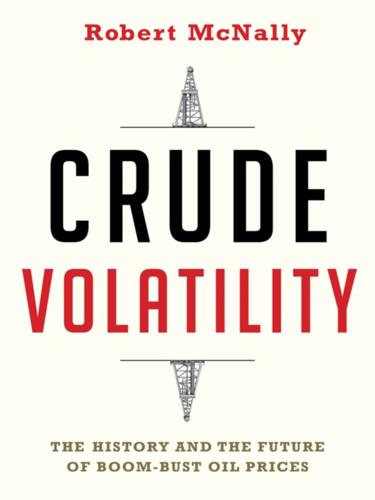
Crude Volatility: The History and the Future of Boom-Bust Oil Prices
by
Robert McNally
Published 17 Jan 2017
Fuel efficiency of new U.S. passenger cars, even excluding gas-guzzling sport utility vehicles and pickups, increased at an annual rate of just 2.5 percent since 1973.7 And efficiency gains are partly offset by consumer preferences (such as for bigger cars and SUVs) and what economists call the “rebound effect”—higher efficiency lowers the cost of driving, inducing motorists to drive more.8 So while oil has been displaced in electricity generation, there are no scalable substitutes on the horizon for oil use in transportation, which accounts for 55 percent of world consumption.9 Oil’s strong and likely enduring advantage in transportation stems from its application in a variety of vehicle types, cost competitiveness, infrastructure availability and supportive government policies.10 Scale also is critical to thinking about energy transformations. The larger the scale of prevailing energy forms—in this case, the near-total dominance of transportation by gasoline and diesel—the longer energy transitions will take. “Even if an immediate alternative were available,” leading energy researcher Vaclav Smil has written, “writing off this colossal infrastructure that took more than a century to build would amount to discarding an investment worth well over $5 trillion—but it is quite obvious that its energy output could not be replicated by any alternative in a decade or two.”11 As for policy, and the call that we must stop using oil because of climate change: Although elected officials from many nations pledged to reduce future carbon emissions in Paris in 2015, we are not going to see a forced march off of oil in the foreseeable future.
…
While economists believe people could adjust to steadily rising prices, and abrupt spike caused by unexpected peaking would be catastrophic, economically and politically. Modern transportation, agriculture, defense, and other core systems depend on oil, and there is no near term alternative to oil in these vital sectors. Peak oil adherents warn against assuming that past, smooth energy transition such as from wood to coal in the 1800s or coal to oil in the 1900s are a model for peak oil, which will be “abrupt and revolutionary.” In 2005 a report by three researches sponsored by the U.S. Department of Energy (though not reflecting government views) titled “Peaking of World Oil Production: Impacts, Mitigation, & Risk Management” concluded: The peaking of world oil production presents the U.S. and the world with an unprecedented risk management problem.

The Coming Wave: Technology, Power, and the Twenty-First Century's Greatest Dilemma
by
Mustafa Suleyman
Published 4 Sep 2023
But as with AI and synthetic biology, albeit at an earlier stage, it appears to be at a point where funding and knowledge are escalating, progress on fundamental challenges is growing, and a range of valuable uses are coming into view. Like AI and biotech, quantum computing helps speed up other elements of the wave. And yet even the mind-bending quantum world is not the limit. THE NEXT ENERGY TRANSITION Energy rivals intelligence and life in its fundamental importance. Modern civilization relies on vast amounts of it. Indeed, if you wanted to write the crudest possible equation for our world it would be something like this: (Life + Intelligence) x Energy = Modern Civilization Increase any or all of those inputs (let alone supercharge their marginal cost toward zero) and you have a step change in the nature of society.
…
Vast quantities of methane will escape the melting permafrost, threatening a feedback loop of extreme heating. Disease will spread far beyond its usual ranges. Climate refugees and conflict will engulf the world as sea levels inexorably rise, threatening major population centers. Marine and land-based ecosystems face collapse. Despite well-justified talk of a clean energy transition, the distance still to travel is vast. Hydrocarbons’ energy density is incredibly hard to replicate for tasks like powering airplanes or container ships. While clean electricity generation is expanding fast, electricity accounts for only about 25 percent of global energy output. The other 75 percent is much trickier to transition.
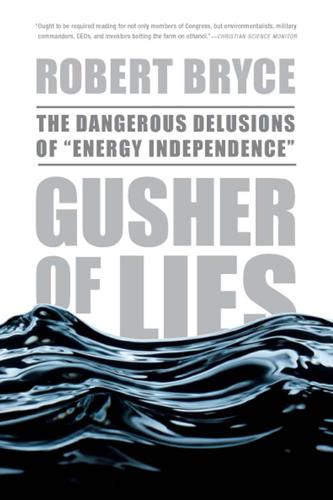
Gusher of Lies: The Dangerous Delusions of Energy Independence
by
Robert Bryce
Published 16 Mar 2011
In a 2006 speech delivered at a conference sponsored by the Organization for Economic Cooperation and Development in Paris, Smil—one of the world’s most authoritative writers about energy and the history of technological advances—said that energy transitions are “deliberate, protracted affairs.” Today’s energy technologies are “still dominated by prime movers and processes invented during the 1880s (steam turbines, internal combustion engines, thermal and hydro electricity generation) or during the 1930s (gas turbines, nuclear fission) and no techniques currently under development,” Smil said, will be able to rival those technologies over the next two or three decades. He continued, “Energy transitions span generations and not, microprocessor-like, years or even months: there is no Moore’s law for energy systems.”

The Quest: Energy, Security, and the Remaking of the Modern World
by
Daniel Yergin
Published 14 May 2011
That increases the likelihood of seeing the benefits from what General Georges Doriot, the founder of modern venture-capital investing, called “applied science” being successfully applied to energy. The lead times may be long owing to the scale and complexity of the vast system that supplies energy, but if this is to be an era of energy transition, then the $6 trillion global energy market is “contestable.” That is, it is up for grabs among the incumbents—the oil, gas, and coal companies that supply the bulk of today’s energy—and the new entrants—such as wind, solar, and biofuels—that want to capture a growing share of those dollars. A transition on this scale, if it does happen, has great significance for emissions, for the wider economy, for geopolitics, and for the position of nations.
…
Although there was some continuity on the issue of price controls, renewable energy was an entirely different story. It had become apolitical divide—indeed, an ideological test—and, as such, represented a major discontinuity between the two administrations. The difference was made abundantly clear at the outset of the Reagan administration by Michael Halbouty, the head of the energy transition team and successful Texas wildcatter, as well as the developer of the sprawling Galleria shopping center and hotel complex in Houston. To a visitor at the Department of Energy, Halbouty announced that he could sum up the energy policy of the Reagan administration in just three words—“Production, production, and production”—as in domestic production of oil and natural gas.
…
In 2010 the Obama administration announced that solar panels and a solar water heater would be reinstalled on the roof of the White House residence—from where Jimmy Carter’s solar hot water heater had been removed in 1986.34 If a transition to renewables is really made on a large scale, it will rival the importance of the world’s transition to reliance on oil in the twentieth century, whether seen from a geopolitical or economic or environmental perspective. However, it will likely be a long road. Historically, energy transitions have occurred over many decades. Thus even with rapid growth, renewables in 2030 are likely to still be far from being a dominant energy resource. Their actual role and market share will be determined by the interplay of policy, economics, and innovation. There is not a single scenario for the future of renewables.

Automation and the Future of Work
by
Aaron Benanav
Published 3 Nov 2020
Even a minimal net redistribution can be welcomed on its own terms, above all if it goes some way to alleviate the stress of poverty and its associated mental and physical ailments. Combined with a global carbon tax, UBI could play a role in mitigating climate change, freeing us to cleave toward a carbon-neutral economy without worrying about the balance of jobs gained and lost in the course of a harrowing energy transition.41 To evolve from a technocratic fix to an emancipatory social project, however, UBI would have to empower individuals to fight for dramatic and lasting social change. There are reasons to doubt that UBI will have that effect. Let’s begin with the flourishing communities that UBI proponents invoke.

Water: A Biography
by
Giulio Boccaletti
Published 13 Sep 2021
Powering a Hydraulic Nation If state intervention in the rural landscape accelerated in the twentieth century, the energy transition was without doubt its most striking evolution. With the benefit of hindsight, one can see just how remarkable the transition was. In 1900, a third of all energy came from sheer human and animal muscle. Fuel wood, mostly for heating, did much of the rest. A century later, human work accounted for only 5 percent, as the total energy use grew tenfold. That energy transition was a story of water. Its early stages had already been tightly bound to water, from mine drainage to canal transport in support of the coal economy, and water resources development would also later play a role in the rise of oil.

Super Continent: The Logic of Eurasian Integration
by
Kent E. Calder
Published 28 Apr 2019
It also enhances the likelihood that continental interdependence itself will move forward when the centrally located nation is growing and politically influential. How strong today are these forces for integration, and where might they lead the continent? Those are the central questions that we now confront. The balance of this chapter considers the three most basic and dynamic sectoral catalysts for Eurasia’s deepening integration: energy, transit trade, and finance. Animating all three are even more elemental forces— economic growth and technological change. Both of these latent transformative agents have been unusually vigorous across the continent over the past three post– Cold War decades, with the Logistics, AI, and 5G Revolutions accelerating connectivity still further.
…
In Conclusion Eurasia has undergone a profound transformation over the past quarter century, becoming an increasingly integrated and interactive chessboard, albeit 98 chapter 4 one on which important political, social, and economic differences still remain. The three most important drivers of this transformation have been energy, transit trade, and finance. Together, they have fostered deepening economic interdependence across Eurasia, including more concentrated transit trade and production networks linking China and Europe. These networks potentially hold long-term significance for global geopolitics, and for global governance as well.

Survival of the Richest: Escape Fantasies of the Tech Billionaires
by
Douglas Rushkoff
Published 7 Sep 2022
We deploy vast arrays of real-world sensors and online surveillance algorithms to track human behavior, converting it into data so it can be modeled, predicted, and influenced. Everything is made compatible with the market. So sure, it’s a more “inclusive market,” in that the market is able to include everything . Not even progressives complain about this part. The Green New Deal is banking on the idea that the great energy transition to come will not only save the planet but give everyone jobs. They cheer when the United States or the European Union adopts new, more ambitious goals for rapid transformation of the energy infrastructure, anxious to reach carbon neutrality before global temperatures rise beyond repairable levels.

The Passenger
by
The Passenger
Published 27 Dec 2021
And then there are the post-industrial cities regenerated through a growing globalised economy and a net migration that has recently, for the first time in well over a century, turned positive. And at the centre, in the Midlands, the country’s hidden core, its boglands, the peat from which – a particularly dirty form of fossil fuel – has been extracted to depletion, a symbol not only of independence and economic self-reliance but also of the challenges of the energy transition to come. And yet, as Colum McCann reminds us, a country is composed most of all of its people, in which case the future can only be bright, because the people of Ireland – those same people who marched en masse for peace in the 1990s – decided to take things into their own hands and determine for themselves what their nation should be.

Mobility: A New Urban Design and Transport Planning Philosophy for a Sustainable Future
by
John Whitelegg
Published 1 Sep 2015
Elvik, R (2008) Road safety management by objectives: a critical analysis of the Norwegian approach, Accident Analysis and Prevention 40 (2008), 1115-1122. Elvik, R and Amundsen A H (2000) Improving road safety in Sweden. Main report. TOI Report 490, Oslo Institute of Transport Economics. Ethics Commission for a Safe Energy Supply (2011), Germany’s Energy Transition: A Collective Endeavour for the Future, German Federal Government, Berlin, 30 May 2011. EUROCONTROL (2008) Long-Term Forecast Flight Movements 2010 – 2030. European Commission (1999) EU focus on clean air. European Commission (2009) European Air Traffic Management Master Plan, European Commission, SESAR and EUROCONTROL.
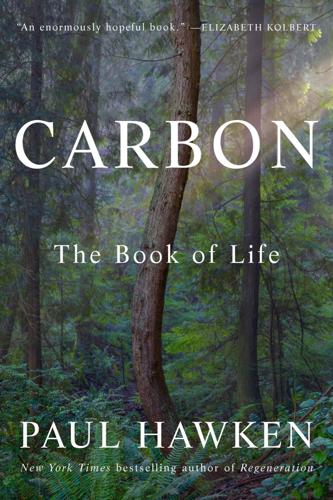
Carbon: The Book of Life
by
Paul Hawken
Published 17 Mar 2025
The planet asks us that we renounce a culture of endless taking so that the world can continue.” This cannot happen if political, financial, and corporate powers think solely about future gains. The task of modernity is to recognize that our existence rests upon the entirety of planetary life. The world economy is undergoing a massive energy transition; a civilization based on fossil-fuel combustion is transforming into one powered by current solar income: solar panels, wind turbines, and hydro. The necessity is clear. Governing and financial institutions required decades to embrace the climate crisis. Yet, now that they do, the dominant discourse about the crisis places the living world into a subordinate position, a distinct category, essential to be sure, but not as urgent, usually referred to as biodiversity.

The Sport and Prey of Capitalists
by
Linda McQuaig
Published 30 Aug 2019
Washington’s failure to invest significantly on the green front in recent years has been mostly due to the enormous clout of the fossil fuel industry, which feels threatened by the prospect of a green energy revolution. “Energy markets are dominated by some of the largest and most powerful companies on the planet, which are generally not driven to innovate,” writes Mazzucato. “Leaving direction setting to ‘the market’ only ensures that the energy transition will be put off until fossil fuel prices reach economy-wrecking highs.” In November 2018, Detroit-based General Motors dealt a staggering blow to 2,700 Canadian workers when it announced plans leading to the closure of a key automotive assembly plant in Oshawa, Ontario. In its heyday decades earlier, GM Oshawa had been the largest auto complex in North America and had employed twenty-three thousand workers.
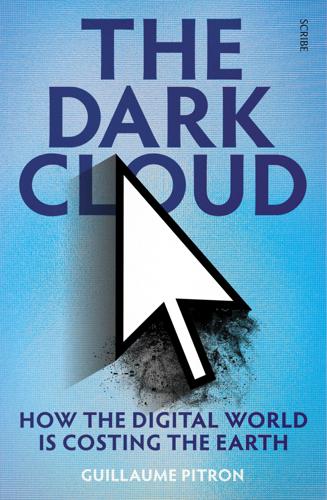
The Dark Cloud: How the Digital World Is Costing the Earth
by
Guillaume Pitron
Published 14 Jun 2023
As it happens, an authority on the matter has already stated that the existence or the absence of these credits have absolutely no bearing on the development of renewables.73 In the meantime, ‘cheap green electricity’ stands out as an excellent way for companies such as Netflix to delay their energy transition. Western companies nevertheless often do better than the rest of the world does, as 35 per cent of the electricity used in the world today is generated from coal. Be that as it may, this general addiction to fossil fuels explains why the entire digital industry, which taps 10 per cent of the electricity generated on the planet, is reported to be responsible for 3.7 per cent of greenhouse-gas emissions — a number that could double between now and 2025.74 And so we need to realise that even our most banal digital habits have a carbon impact.

How the Railways Will Fix the Future: Rediscovering the Essential Brilliance of the Iron Road
by
Gareth Dennis
Published 12 Nov 2024
The industrial revolution widened these primary resource demands in the 1800s to include tin, tungsten, magnesium, copper, manganese and lead. By the 1900s, the list of core consumable resources had diversified further to include platinum, silicon, thorium, titanium, vanadium, molybdenum, nickel, cobalt, chromium, aluminium and a variety of rare-earth metals. The mineral requirements of the “renewable” energy transition, alongside the complexifying nature of our technology, has widened this pool of critical elements even further in the 2000s, adding rhodium, tantalum, tellurium, uranium, ruthenium, indium, potassium, lithium, niobium, phosphorous, rhenium, germanium, gallium, cadmium and silver to the list.
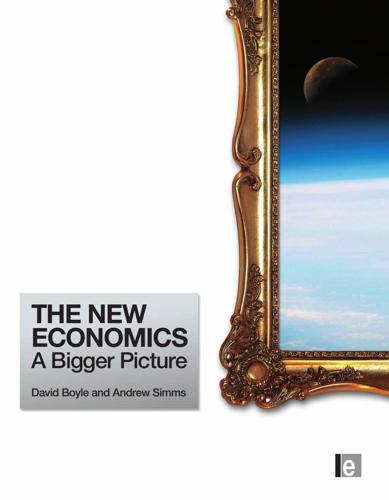
The New Economics: A Bigger Picture
by
David Boyle
and
Andrew Simms
Published 14 Jun 2009
A key test is how, in economically stressed times, affordable finance can be made available in a targeted way to kick-start new, low-carbon, energy, transport, food and housing sectors. One useful precedent is the example of South Korea. Over years it channelled lines of low-cost credit to key parts of its economy. The success of this, policy can be measured in the fact that the sections of South Korea’s industry that benefited are now ‘world leaders’. 17 Pay for energy transition and fuel poverty: a windfall tax on the unearned profits of the fossil fuel companies to provide a safety net for those in fuel poverty, and to help finance the UK’s transition to clean energy Fossil fuels are an unrepeatable windfall from nature, yet the UK government has so far failed adequately to take advantage of its income from oil to prepare for a lowcarbon future.

Supertall: How the World's Tallest Buildings Are Reshaping Our Cities and Our Lives
by
Stefan Al
Published 11 Apr 2022
“Refrigeration for Towns and Cities by Street Mains,” Scientific American, September 5, 1891. 11.Ingels and Carrier, Willis Haviland Carrier, 88. 12.Stan Cox, Losing Our Cool: Uncomfortable Truths About Our Air-Conditioned World (and Finding New Ways to Get Through the Summer (New York: The New Press, 2010), 9. 13.Marsha Ackerman, Cool Comfort: America’s Romance with Air-Conditioning (Washington, DC: Smithsonian Institution Press, 2010), 121. 14.Banham, Architecture of the Well-Tempered Environment, 11. 15.Daniel A. Barber, “Heating the Bauhaus: Understanding the History of Architecture in the Context of Energy Policy and Energy Transition” (Philadelphia: Kleinman Center for Energy Policy, 2019), 5. 16.Pam Belluck, “Chilly at Work? Office Formula Was Devised for Men,” New York Times, August 4, 2015. 17.Tom Wolfe, From Bauhaus to Our House (New York: Macmillan, 1981), 2. 18.Patrick Sisson, “How Air Conditioning Shaped Modern Architecture—And Changed Our Climate,” Curbed, May 9, 2017, accessed February 24, 2021, https://archive.curbed.com. 19.Christopher S.

Uncomfortably Off: Why the Top 10% of Earners Should Care About Inequality
by
Marcos González Hernando
and
Gerry Mitchell
Published 23 May 2023
Replacing it with a progressive property tax, as outlined in current Labour Party proposals, which would be set nationally and paid by property owners rather than tenants, would reduce the tax paid by a majority of households and discourage the use of homes as financial assets.92 High earners also want action on tax avoidance and evasion. We know that avoidance costs governments 4–10% of global corporate tax revenues, money that could be spent on health, education or infrastructure for the energy transition. Even though tax fraud costs the economy 9 times more than benefits fraud (£20 billion versus £2.2 billion), you are 23 times more likely to be prosecuted for the latter.93 Tackling tax avoidance and evasion through fixing structural problems in the system, enforcing rules and regulations, would not only raise revenue but also restore public faith in the tax system.

Badvertising
by
Andrew Simms
Adverts for oil and gas companies, car makers and airlines disproportionately focus on typically minor environmental activities by the companies in question, while glossing over their core, polluting activities. Oil and gas companies, for example, at a time when they were aggressively promoting themselves as leaders in the green energy transition, in reality were investing a mere 1 per cent of their budgets on clean energy. A study of spending in 2018 by the world’s top 24 publicly listed oil and gas companies revealed that only 1.3 per cent of budgets totalling $260 billion went into low-carbon energy sources.6 Car and aviation industries are explored more in later chapters.

Beautiful Solutions: A Toolbox for Liberation
by
Elandria Williams, Eli Feghali, Rachel Plattus
and
Nathan Schneider
Published 15 Dec 2024
He is also an organizer focused on housing justice, and works on climate justice and sustainability efforts in and around Ithaca, New York. Germany’s Green Party, founded in 1979, won its first parliamentary seats in West Germany’s lower chamber in 1983. Its elected members brought with them the notion of “Energiewende”—literally meaning energy transition or energy change—which called for a transition to a renewable energy system controlled by local communities. A newly popularized understanding of climate change brought about a 1987 Green Party proposal to drastically reduce carbon emissions in the decades approaching the 2000s. At the same time, renewed opposition to nuclear power developed in 1986 following the Chernobyl nuclear plant disaster in the Ukrainian Soviet Socialist Republic, and this opposition successfully pressured the German government to agree on a nuclear phaseout date.
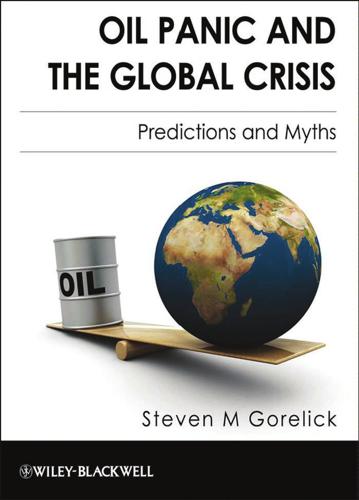
Oil Panic and the Global Crisis: Predictions and Myths
by
Steven M. Gorelick
Published 9 Dec 2009
The transition will be difficult, and for some catastrophic’ with ‘major economic and political discontinuity’ globally and ‘great suffering’ (Campbell, 1997, p. 177).”11 • “Intervention by governments will be required, because the economic and social implications of oil peaking would otherwise be chaotic. … The world has never faced a problem like this. Without massive mitigation more than a decade before the fact, the problem will be pervasive and will not be temporary. Previous energy transitions (wood to coal and coal to oil) were gradual and evolutionary; oil peaking will be abrupt and revolutionary. … Without mitigation, the peaking of world oil production will almost certainly cause major economic upheaval.”12 The Oil Panics of 1916 and 1918 One of the first major oil depletion scares occurred near the turn of the last century.

The Age of Stagnation: Why Perpetual Growth Is Unattainable and the Global Economy Is in Peril
by
Satyajit Das
Published 9 Feb 2016
Elizabeth Kolbert, Field Notes from a Catastrophe: Man, Nature, and Climate Change, Bloomsbury, 2006. J. R. McNeill, Something New under the Sun: An Environmental History of the Twentieth-Century World, W. W. Norton & Company, 2000. Peter Maass, Crude World: The Violent Twilight of Oil, Allen Lane, 2009. Vaclav Smil, Energy Transitions: History, Requirements, Prospects, Praeger, 2010. Steven Solomon, Water: The Epic Struggle for Wealth, Power, and Civilisation, Harper Perennial, 2010. Nicholas Stern, The Economics of Climate Change: The Stern Review, Cambridge University Press, 2007. Alan Weisman, The World without Us, Picador, 2007.

The Lost Decade: 2010–2020, and What Lies Ahead for Britain
by
Polly Toynbee
and
David Walker
Published 3 Mar 2020
Wind capacity needs to grow by a factor of nine, which means a lot more turbines, both on- and offshore. The possibilities are hotly disputed; the equation has to include back-up generation and storage, which awaits better battery technology. Cue massive public investment. Land, Sea and Air Markets don’t work alone. The need for the state to shape the energy transition is echoed in other spheres, if necessary overriding individual owners of property to secure the greater good. The planning profession has suffered grievously, especially in town halls, and needs to be remotivated. Victoria Hills, chief of its institute, said, ‘Places that put planning at the heart of their corporate strategy are successful places to live, yet our research uncovers a prevailing sense that council planners face huge challenges to their ability to plan effectively in the public interest.’

More From Less: The Surprising Story of How We Learned to Prosper Using Fewer Resources – and What Happens Next
by
Andrew McAfee
Published 30 Sep 2019
As these demonstrations grew and turned violent, the government backed down, announcing a (perhaps indefinite) delay in imposing the tax. France’s neighbor Germany is also running into problems as it works to combat global warming, and its troubles highlight an important failure at the intersection of public awareness and responsive government. Germany has embarked on an ambitious Energiewende—literally, a national “energy transition”—away from fossil fuels and toward renewables. However, the results to date have been unimpressive: electricity prices for consumers have doubled since 2000, and carbon emissions have been flat or increasing in recent years (after decreasing substantially for more than a decade after 1990). Why is this?

Green Swans: The Coming Boom in Regenerative Capitalism
by
John Elkington
Published 6 Apr 2020
Business leaders are being told that the global economy is heading for the mother of all downturns as the carbon bubble bursts.12 This process, largely driven by disinvestment from fossil fuels and the exponential growth of new technologies in renewable power generation and electric vehicles, could ensure that the oil industry’s vast reserves turn into stranded assets, undermining pension funds heavily invested in old forms of energy—and triggering both mass unemployment and, as a consequence, new waves of populist politics. Recall that the financial crisis of 2008 was triggered by the loss of $0.25 trillion, then imagine what might happen when this coming energy transition wipes somewhere between 1 and 4 trillion dollars from the global economy. Stage 2: RESPONSIBILITY Fifty years ago, as already mentioned, Chicago economist Milton Friedman famously declared that the “one and only” social responsibility of business is to create profits. Ever since, variants of these words have become the mantras of capitalism, corporations, and business schools—with a growing range of consequences, many of them unintended.

Cobalt Red: How the Blood of the Congo Powers Our Lives
by
Siddharth Kara
Published 30 Jan 2023
Van Lierde, Jean, ed. (1972). Lumumba Speaks: The Speeches and Writings of Patrice Lumumba, 1968–1961. Little, Brown & Co. Boston. Van Reybrouk, David. (2014). Congo: The Epic History of a People. HarperCollins. New York. World Bank. (2020). “Minerals for Climate Action: The Mineral Intensity of the Clean Energy Transition.” Washington, D.C. Young, Crawford. (1965). Politics in the Congo: Decolonization and Independence. Princeton University Press. Princeton, NJ. INDEX The index that appeared in the print version of this title does not match the pages in your e-book. Please use the search function on your e-reading device to search for terms of interest.

The New Harvest: Agricultural Innovation in Africa
by
Calestous Juma
Published 27 May 2017
The West African Power Pool organization has been created to integrate the national power system operations into a unified regional electricity market—with the expectation that such a mechanism would, over the medium to long term, assure the citizens of ECOWAS member states a stable and reliable electricity supply at affordable costs.11 This will create a level playing field, facilitating the balanced development of the diverse energy resources of ECOWAS member states for their collective economic benefit, through long-term energy sector cooperation, unimpeded energy transit, and increased cross-border electricity trade. The major sources of electricity under the power pool would be hydroelectricity and gas to fuel thermal stations. Hydropower would be mainly generated on the Niger (Nigeria), Volta (Ghana), Bafing (Mali), and Bandama (Côte d’Ivoire) rivers. The World Bank has committed a $350-million line of credit for the development of the WAPP, but a billion more is needed in public and private financing.
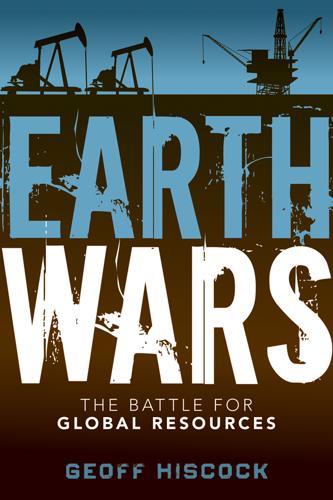
Earth Wars: The Battle for Global Resources
by
Geoff Hiscock
Published 23 Apr 2012
Turkey is the odd man out when it comes to energy resources; it must import 90 percent of its energy, mainly from Russia and Iran. But it does have its own special resource—water, or, more properly, the control of the water that flows from the Tigris and Euphrates rivers into Syria and Iraq. It is also an important energy transit point between suppliers in Central Asia and their key European markets, giving it a degree of influence as an alternative supply route to those offered by Russia. Plus, there is the likelihood it will seek a role in how the energy reserves of the eastern Mediterranean—essentially the oil and gas fields discovered between Israel, Lebanon, and Cyprus—are developed.
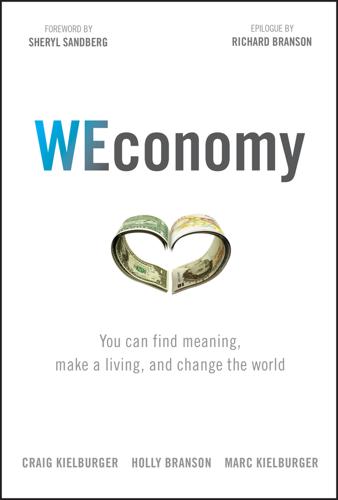
WEconomy: You Can Find Meaning, Make a Living, and Change the World
by
Craig Kielburger
,
Holly Branson
,
Marc Kielburger
,
Sir Richard Branson
and
Sheryl Sandberg
Published 7 Mar 2018
Carbon War Room: This group was founded in 2009 by Richard Branson and a team of like-minded entrepreneurs wanting to speed up the adoption of market-based solutions to climate change. In December 2014, Carbon War Room (CWR) merged with the Rocky Mountain Institute (RMI), a U.S.-based NGO dedicated to transforming global energy use to create a clean, prosperous, and secure low-carbon future. Together, they work across all energy sectors to accelerate the energy transition and reduce carbon emissions. The B Team: See the chapter “People Are Your Purpose” for more information. Memories in the making. 3 Generations Celebrating Virgin Unite's 10th Birthday Conclusion The Weconomy Needs You By Craig Kielburger, Holly Branson, and Marc Kielburger We'll finish where we started, with this promise: In the WEconomy, you can make money and change the world—you can make money by changing the world.

Falter: Has the Human Game Begun to Play Itself Out?
by
Bill McKibben
Published 15 Apr 2019
These researchers found that by 2050, solar energy could provide 69 percent of our power and wind energy another 18 percent, with the rest coming mostly from hydroelectric dams. In the process, we’d create thirty-six million new jobs and the cost per megawatt hour would drop from the present eighty-two dollars to sixty-one dollars. The study’s lead author, Christian Breyer, put it like this: “Energy transition is no longer a question of technical feasibility or economic viability, but of political will.”8 Other economists insist it would be cheaper and faster if there were some nuclear power in the mix, but the bottom line is fairly clear. If human beings wanted to, they could figure out how to extricate us from the climate mess by producing most of our energy from the wind and the sun.
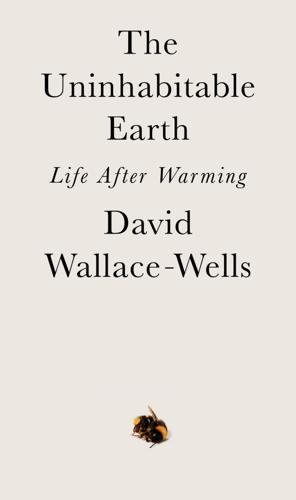
The Uninhabitable Earth: Life After Warming
by
David Wallace-Wells
Published 19 Feb 2019
That market logic was probably always shortsighted, but over the last several years, as the cost of adaptation in the form of green energy has fallen so dramatically, the equation has entirely flipped: we now know that it will be much, much more expensive to not act on climate than to take even the most aggressive action today. If you don’t think of the price of a stock or government bond as an insurmountable barrier to the returns you’ll receive, you probably shouldn’t think of climate adaptation as expensive, either. In 2018, one paper calculated the global cost of a rapid energy transition, by 2030, to be negative $26 trillion—in other words, rebuilding the energy infrastructure of the world would make us all that much money, compared to a static system, in only a dozen years. Every day we do not act, those costs accumulate, and the numbers quickly compound. Hsiang, Burke, and Miguel draw their 50 percent figure from the very high end of what’s possible—truly a worst-case scenario for economic growth under the sign of climate change.
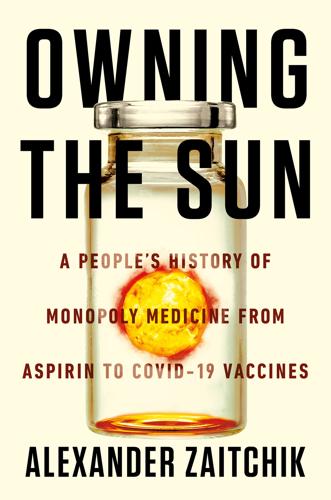
Owning the Sun
by
Alexander Zaitchik
Published 7 Jan 2022
The film’s authorized celebration of Gates is calibrated in the manner of a thousand other profiles from the last twenty years: once a brash, restless, and perhaps overly ambitious genius, Gates has become philanthropist-philosopher touched by humility, heroically channeling his genius and wealth into repairing a world in crisis. The series shows Gates crunching the numbers and studying the angles with darting eyes that feed the mighty processor of his visionary mind. If we are to survive climate change, the energy transition, and infectious disease, Gates concludes, “It’s important that we start deploying solutions unnaturally fast.” A few months after the release of Inside Bill’s Brain, Gates received an opportunity to demonstrate his commitment to historically speedy solutions. As described in the last chapter, COVID-19 triggered urgent planning sessions and international debates about the most effective strategies to defeat the first airborne pandemic virus in a century.

The new village green: living light, living local, living large
by
Stephen Morris
Published 1 Sep 2007
Not, of course, American quantities – each of us uses on average eight times the energy that a Chinese citizen does – but relatively serious quantities nonetheless. Kelly Sims Gallagher, one of the savviest early analysts of climate policy, has devoted the last few years to understanding the Chinese energy transition. Now the director of the Energy Technology Innovation Project at Harvard’s Kennedy School, she has just published a fascinating account of the rise of the Chinese auto industry. Her research makes it clear that neither American industry nor the American government did much of anything to point the Chinese away from our addiction to gasguzzling technology; indeed, Detroit (and the Europeans and Japanese to a lesser extent) was happy to use decades-old designs and processes.
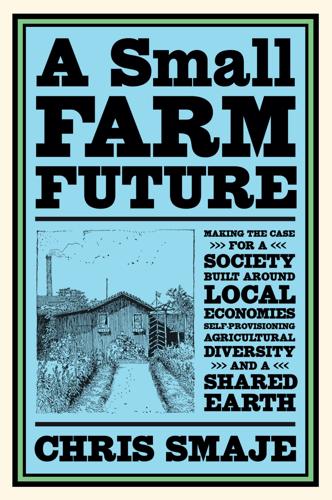
A Small Farm Future: Making the Case for a Society Built Around Local Economies, Self-Provisioning, Agricultural Diversity and a Shared Earth
by
Chris Smaje
Published 14 Aug 2020
It’s therefore possible that the mature energetic human ecology of a small farm future could achieve a reasonable level of well-being for most people at much lower levels of energy consumption than our current fast-throughput energy ecology delivers. That’s a happy conclusion if it’s true, because transitioning to a low-throughput energy ecology seems increasingly unavoidable if we’re to avert climate breakdown. Some less happy conclusions are that energy transitions usually take a long time, and we haven’t yet started one. Crisis #4: Soil Farming, and therefore human life, depends upon the soils in which crops grow. Despite the attention garnered by various costly forms of modern soil-free cultivation like hydroponics, vertical farming and cultured protein, that fundamental truth is unlikely to change in the foreseeable future.

Our Lives in Their Portfolios: Why Asset Managers Own the World
by
Brett Chistophers
Published 25 Apr 2023
Harris, ‘Brazil’s Economic Outlook Buoyed by Big-Ticket Investments’, Financial Times, 4 January 2022. 80 T. Carroll and D. Jarvis, ‘Introduction: Financialisation and Development in Asia Under Late Capitalism’, in T. Carroll and D. Jarvis, eds, Financialisation and Development in Asia (London: Routledge, 2015), p. 6. 81 S. Kennedy, ‘Indonesia’s Energy Transition and Its Contradictions: Emerging Geographies of Energy and Finance’, Energy Research & Social Science 41 (2018), p. 232. 82 ‘Brookfield Asset Management to Acquire Hydroelectric Facility in Brazil’, ENP Newswire, 21 December 2007. 83 ‘Brookfield to Acquire TerraForm Global’, 7 March 2017 – at globe newswire.com. 84 ‘Two PV Plants Bring Clean Energy to Senegal’, Renewable Energy Magazine, 2 June 2021. 85 ‘Brookfield Case Study’, 22 June 2020, Brazil–Canada New Energy Investment Forum 2020, p. 4 – at clientesinterativa.com.br. 86 ‘Ontario Teachers’ to Invest $175m in KKR’s Road Platform in India’, 20 April 2022 – at realassets.ipe.com. 87 ‘Brookfield Case Study’. 88 Westchester, ‘2020 Farmland Report’, p. 4 – at faculty-senate.uiowa.edu. 3.

The Measure of Progress: Counting What Really Matters
by
Diane Coyle
Published 15 Apr 2025
Meaningful economic statistics are needed for governments to devise policies, manage their societies effectively, and deliver for their voters; after all, the word statistics derives from state. Inevitably, though, the statistical lens through which we all try to understand the economy will become blurred at a time when the economy is changing significantly and rapidly—as it is now with the two technological revolutions of AI and digital and of energy transition from carbon-based to net zero. Th ese two—information and energy—are the fundamental “general purpose technologies” that decisively shape the structure of the economy in each era. This is a new era, and a new statistical framework will be needed. The current System of National Accounts (SNA), including the all- important figure for GDP, dates from the 1940s when physical capital was the binding constraint on growth in the postwar era, natural resources seemed free, and the pressing economic policy challenge was seen as effective demand management so the Great Depression could never recur.
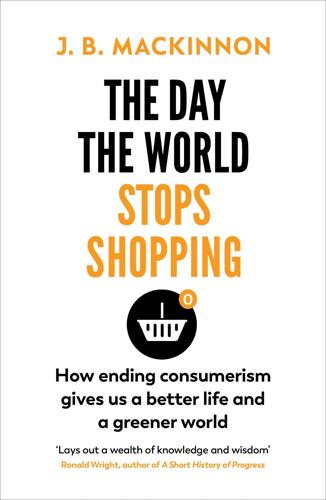
The Day the World Stops Shopping
by
J. B. MacKinnon
Published 14 May 2021
Frontiers in Energy Research 6, no. 38 (2018). Hood, Clifton. In Pursuit of Privilege. New York: Columbia University Press, 2017. Fouquet, Roger, and Peter J.G. Pearson. “Seven Centuries of Energy Services: The Price and Use of Light in the United Kingdom (1300–2000).” The Energy Journal 27, no. 1 (2006). Fouquet, Roger. “Historical Energy Transitions: Speed, Prices, and System Transformation.” Energy Research & Social Science 22 (2016): 7–12. Inoue, Nozomu, and Shigeru Matsumoto. “An Examination of Losses in Energy Savings after the Japanese Top Runner Program.” Energy Policy 124 (2019): 312–19. Jevons, William Stanley. The Coal Question. 1865.

Limitarianism: The Case Against Extreme Wealth
by
Ingrid Robeyns
Published 16 Jan 2024
No doubt they have an army of legal advisers who will make victims’ access to justice impossible. But whatever their legal advisers say, morally speaking the right thing for an energy company to do right now is to make a plan that will phase out fossil fuels as soon as possible, redirect all their profits into making that energy transition, and pay compensation for all the damage they have caused. As we have seen with the extreme profits they generated in 2022, they won’t. Their only aim is to generate more wealth.18 Without government intervention, there isn’t much reason to be hopeful about what we can expect from the big polluting companies.

When It All Burns: Fighting Fire in a Transformed World
by
Jordan Thomas
Published 27 May 2025
In 2018, five of the largest fossil fuel corporations spent $200 million lobbying to control, delay, or block climate policies. The same industry front groups that once flooded the media with climate change denial simply shifted the target of their misinformation, inundating the public with claims that solar farms shed toxic chemicals into the water supply, that wind turbines caused cancer, and that the energy transition was a Trojan horse for communists intent on stealing individual liberties. The current strategy, to use the words of Steve Bannon—who worked with Ben Shapiro at Breitbart and is a former Republican White House political tactician—is to “flood the zone with shit.” By inundating the public with a constant stream of misinformation, fossil fuel operatives make scientific facts appear unknowable, which paralyzes action and deflects legitimate debate.

The Third Industrial Revolution: How Lateral Power Is Transforming Energy, the Economy, and the World
by
Jeremy Rifkin
Published 27 Sep 2011
Rising Oil Price Threatens Fragile Recovery Financial Times. http://www.ft.com/cms/s/0/056db69c-1836-11e0-88c9-00144feab49a.html#axzz1IagH4LTi. 15.Ibid. 16.Wolf, M. (2011, January 4). In the Grip of a Great Convergence. Financial Times. http://www.ft.com/cms/s/0/072c87e6-1841-11e0-88c9-00144feab49a.html#axzz1IagH4LTi. 17.Ibid. 18.Ibid. 19.Edwards, J. (2002, March 14). [E-mail message to Jeremy Rifkin]; Edwards, John D. Twenty-First Century Energy: transition from Fossil Fuels to Renewable, Non-polluting Energy Sources. University of Colorado, Department of Geological Sciences—EMARC. April 2001. 20.Rich, M., Rampell, C., & Streitfeld, D., (2011, February 25). Rising Oil Prices Pose New Threat to U.S. Economy. New York Times, p. A1. 21.Farchy, J., & Hook, L., (2011, February 25).

The Boom: How Fracking Ignited the American Energy Revolution and Changed the World
by
Russell Gold
Published 7 Apr 2014
They believed that Sullivan County was there to be worked. Small subsistence farmers were settling all over the county, clearing out the hemlock forest to harvest the bark, which was used in nearby tanneries. Soon railroads would enter the county, to transport its coal north and blocks of ice south. The United States was in the midst of an energy transition; coal would soon displace wood as America’s primary fuel and fire the nation’s industrialization. Pennsylvania embraced its role as a resource provider and became a leading producer of coal, iron, steel, timber, and petroleum. Sullivan County required tax revenue to build roads and supply services to its population, which increased by nearly half between 1860 and 1880.
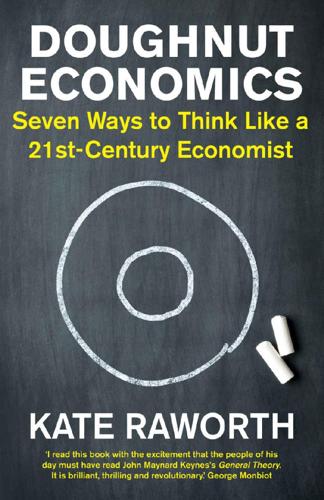
Doughnut Economics: Seven Ways to Think Like a 21st-Century Economist
by
Kate Raworth
Published 22 Mar 2017
UNEP (2016) Global Material Flows and Resource Productivity: A Report of the International Resource Panel, available at: http://www.uneplive.org/material#.V1rkAeYrLIG 8. Goodall, C. (2012) Sustainability. London: Hodder & Stoughton. 9. Global Footprint Network (2016) ‘National Footprint Accounts’, available at: http://www.footprintnetwork.org/en/index.php/GFN/page/footprint_data_and_results/ 10. Heinrich Böll Foundation (2012) ‘Energy transition: environmental taxation’, available at: http://energytransition.de/2012/10/environmental-taxation/ 11. California Environmental Protection Agency (2016) ‘Cap-and-Trade Program’, available at: http://www.arb.ca.gov/cc/capandtrade/capandtrade.htm 12. Schwartz, D. ‘Water pricing in two thirsty cities: in one, guzzlers pay more, and use less’, New York Times 6 May 2015. http://www.nytimes.com/2015/05/07/business/energy-environment/water-pricing-in-two-thirsty-cities.html?

Human Frontiers: The Future of Big Ideas in an Age of Small Thinking
by
Michael Bhaskar
Published 2 Nov 2021
See also an extended discussion in Cowen and Southwood (2019) of why digital does make such a difference. 27 See for example Colvile (2017) or innumerable op-ed pieces casually making the same claim. 28 For the impact of energy on civilisations, see Smil (2017). 29 Storrs Hall (2018) 30 Of course, while there are signs of an energy transition to renewables at the frontier as well, this is not contra the Henry Adams curve delivering a thirtyfold increase in available energy. See Storrs Hall (2018) for more detail on why the curve flatlined and how it could change in future. 31 Dorling (2020) 32 This wording – an age of consolidations not revolutions – comes from a conversation with Peter Watson, while the quote is from Patrick Collison in Smith (2021). 33 There is a considerable debate on this question.
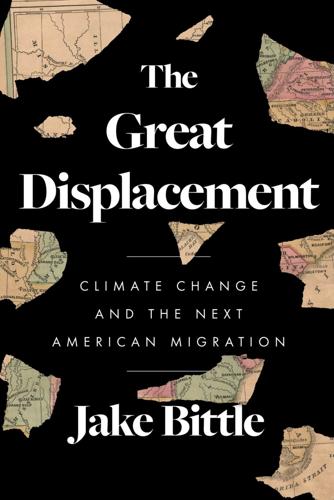
The Great Displacement: Climate Change and the Next American Migration
by
Jake Bittle
Published 21 Feb 2023
Coal-fired power generation reached new highs in 2021 during the pandemic rebound, and the rebound from the Russian invasion of Ukraine breathed new life into oil and gas; overall emissions rose almost 5 percent from the previous year. Even the countries that have moved first and fastest on the energy transition have fallen short of their goals—Germany, for instance, missed its most recent emissions targets by a wide margin, despite spending more than half a trillion dollars on climate action over a few decades, and the Russian invasion of Ukraine has forced many European countries to consider restarting coal plants and building new terminals to import natural gas.

Innovation and Its Enemies
by
Calestous Juma
Published 20 Mar 2017
It was an act of political courage that paid off with regard to the objectives he set out to achieve. As national and global challenges mount, so too will the demand for decisive leaders to champion the application of new technologies. There are two examples that offer diverse needs for leadership. The first is the field of energy transitions. A variety of concerns such as climate change and international security call into question the continued use of fossil fuels. Much of this debate has occurred under the auspices of the United Nations Framework Convention on Climate Change. Reaching agreement on climate presupposes the existence of sovereign champions willing to promote the adoption of renewable energy technologies and other climate mitigation measures.

The Grid: The Fraying Wires Between Americans and Our Energy Future
by
Gretchen Bakke
Published 25 Jul 2016
Nor should we be surprised that these behemoths of old power are unwilling to embrace a transformation that will quite likely put them out of business. In this they are no different from any company—though it is easy to valorize smaller more innovative endeavors—none of them commit suicide on purpose. Maneuvering to capture market share is a big part of what is driving the energy transition, and it is in a constant state of vacillation. One step forward, two steps back, we lurch rather than cruise into the future. The changes to our grid will not happen overnight, but they are already far enough along to be rightly considered irreversible. As the first decade of the twenty-first century crested, making power from renewable sources shifted from a nice idea and a minor player on the electricity scene into the mainstream.

The Controlled Demolition of the American Empire
by
Jeff Berwick
and
Charlie Robinson
Published 14 Apr 2020
Trash collection and disposal is run by local or national companies that turn a profit if they run their businesses efficiently, so this industry has been operating well even though Americans contribute more than half of their trash to landfills. Part of what allows these companies to profit is their commitment to recycling 35% of the 258 million tons of MSW and turning another 13% into energy. Transit: D-Approximately $90 billion is needed to rehab the nation’s transit system due to underfunding and aging systems. Many Americans do not even have access to public transit, a crime against those dependent on this government service for getting to their jobs that are getting harder and harder to come by.

European Spring: Why Our Economies and Politics Are in a Mess - and How to Put Them Right
by
Philippe Legrain
Published 22 Apr 2014
Since early 2012 Germany has been able to borrow for ten years at negative interest rates, after allowing for inflation, and it faced very low interest rates before that. It was an ideal opportunity to invest in upgrading the country’s rundown infrastructure, in the clean energy needed to realise Merkel’s desired “energy transition” (Energiewende) and more generally in future growth. This would also have helped offset the squeeze on demand in southern Europe – by providing a growing market for southern European exports and those of other countries to which southern Europe might export, a role that southern Europe played for Germany in the pre-crisis years.

Good Economics for Hard Times: Better Answers to Our Biggest Problems
by
Abhijit V. Banerjee
and
Esther Duflo
Published 12 Nov 2019
More generally, until the Paris Agreement in 2015, India had simply refused to contemplate limits on its own emissions, arguing that it could not afford to hinder its own economic growth and rich countries should bear the brunt of the adjustment. The position evolved when India ratified the Paris Agreement and came up with a concrete commitment, asking in exchange for some serious financial aid to afford the energy transition, to be financed from an international fund paid for by the rich countries. Although Indian emissions are not a large fraction of world emissions today, India will be a key player moving forward, as its growing middle class consumes more and more. And unlike the United States, a large part of its population will also be directly and severely affected by climate change, so it should be in a good place to understand the costs of today’s choices.
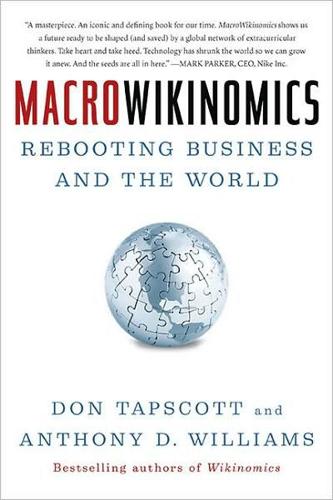
MacroWikinomics: Rebooting Business and the World
by
Don Tapscott
and
Anthony D. Williams
Published 28 Sep 2010
Karen Pallarito, “Government to Pay for More Than Half of U.S. Health Care Costs,” U.S. News (February 4, 2010). 11. Geoffrey Lean, “Water scarcity ‘now bigger threat than financial crisis,’” The Independent (March 15, 2009). 12. Source: http://www.globalissues.org/article/75/world-military-spending. 13. Peter Voser, “Energy transition: not for the faint-hearted,” Globe and Mail (September 17, 2009). 14. Susan Kraemer, “China Now Spending $9 Billion a Month on Renewable Energy,” CleanTechnica (December 1, 2009). 15. The links between poverty and extremism are contentious, according to Ömer Tapinar, a professor of national security studies at the National War College and an adjunct professor at the Johns Hopkins University’s School of Advanced International Studies.

The WikiLeaks Files: The World According to US Empire
by
Wikileaks
Published 24 Aug 2015
In a sense, Iran is the last man standing, although it has been badly weakened by US-led economic sanctions. The “Turkish pillar” has been a mainstay since the end of World War II. As one cable notes, “A stable Turkey is important to the United States mainly for geostrategic reasons. Turkey is situated amid the troubled Balkans, the Caucasus, and the Middle East regions, and is a critical energy transit hub between Central Asia/the Caucasus and Europe” [CRSRL34642]. Turkey fields the largest army in NATO and bolsters the alliance’s southern border with Russia. For several years, US Jupiter medium-range missiles carrying nuclear warheads fifty times as powerful as the Hiroshima bomb were deployed in the country.

Power and Progress: Our Thousand-Year Struggle Over Technology and Prosperity
by
Daron Acemoglu
and
Simon Johnson
Published 15 May 2023
In The Handbook of AI Governance, edited by Justin Bullock, Yu-Che Chen, Johannes Himmelreich, Valerie M. Hudson, Anton Korinek, Matthew Young, and Baobao Zhang. New York: Oxford University Press. Acemoglu, Daron, Philippe Aghion, Lint Barrage, and David Hemous. Forthcoming. “Climate Change, Director Innovation, and the Energy Transition: The Long-Run Consequences of the Shale Gas Revolution.” Acemoglu, Daron, Philippe Aghion, Leonardo Bursztyn, and David Hemous. 2012. “The Environment and Directed Technical Change.” American Economic Review 102, no. 1: 131‒166. Acemoglu, Daron, Nicolás Ajzeman, Cevat Giray Aksoy, Martin Fiszbein, and Carlos Molina. 2021.

Empire of AI: Dreams and Nightmares in Sam Altman's OpenAI
by
Karen Hao
Published 19 May 2025
Now the flamingos are gone; the young daughter of one Indigenous leader in the Peine community has only her ancestors’ stories and a flamingo plushie by which to remember them. Over the years, the Atacameños have heard many narratives used to justify all of this extraction. In 2022, as the European Union set new policies around the energy transition and the demand for lithium skyrocketed, both companies and politicians in Chile and the rest of the world lauded the importance of the country’s mining industry in propelling forward a better future. Indigenous communities watching their land and their communities get ripped apart asked: A better future for whom?

Enlightenment Now: The Case for Reason, Science, Humanism, and Progress
by
Steven Pinker
Published 13 Feb 2018
People don’t need resources: Deutsch 2011; Pinker 2002/2016, pp. 236–39; Ridley 2010; Romer & Nelson 1996. 18. Probability and solutions to human problems: Deutsch 2011. 19. The Stone Age quip is commonly attributed to Saudi oil minister Zaki Yamani in 1973; see “The End of the Oil Age,” The Economist, Oct. 23, 2003. Energy transitions: Ausubel 2007, p. 235. 20. Farming pivots: DeFries 2014. 21. Farming in the future: Brand 2009; Bryce 2014; Diamandis & Kotler 2012. 22. Future water: Brand 2009; Diamandis & Kotler 2012. 23. Environment is rebounding: Ausubel 1996, 2015; Ausubel, Wernick, & Waggoner 2012; Bailey 2015; Balmford 2012; Balmford & Knowlton 2017; Brand 2009; Ridley 2010. 24.